How To Visit Banff Without A Car In 2024
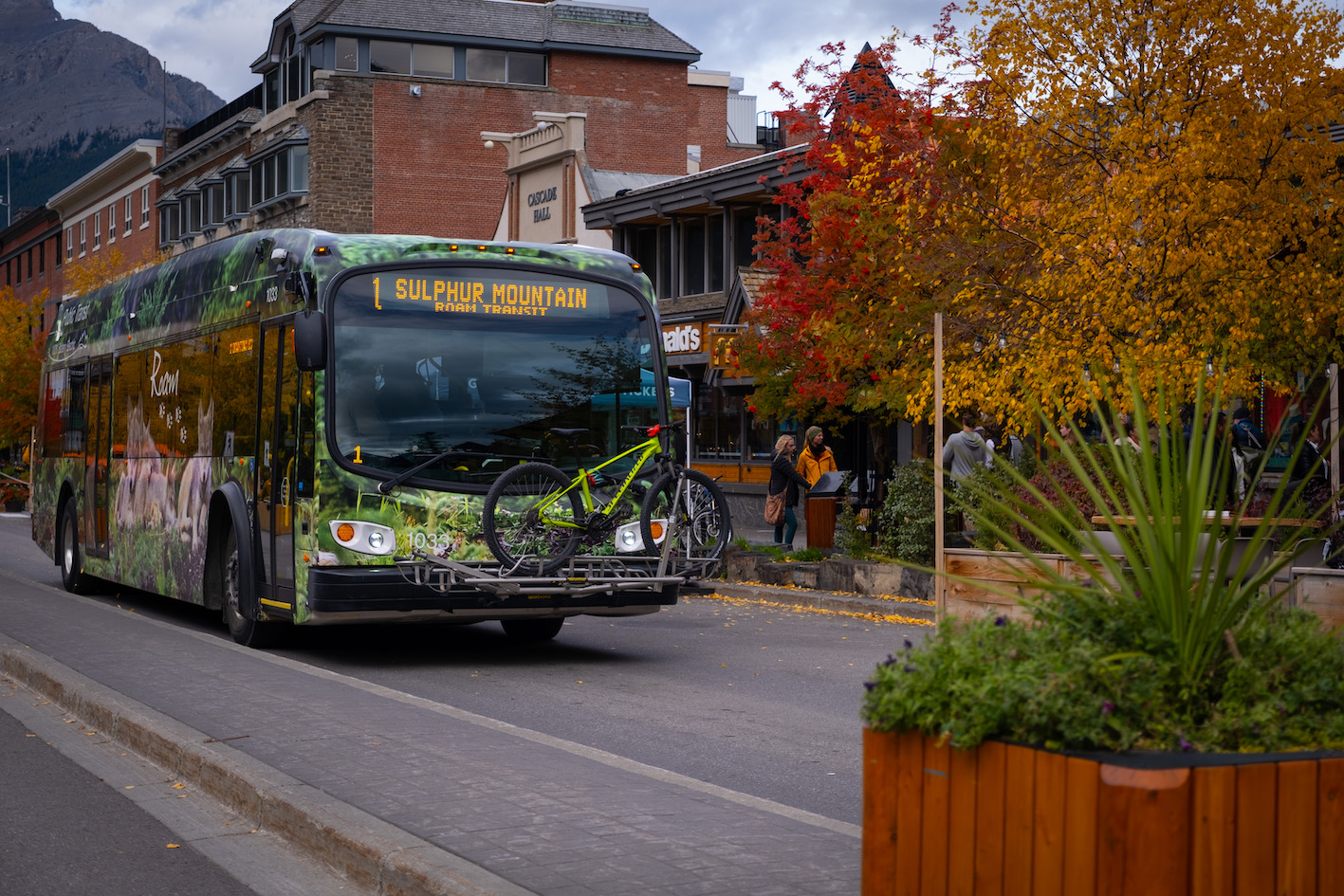
Many people wonder whether it’s possible to visit Banff without a car. The short answer is absolutely! In fact, depending on your trip timeline and priorities, opting to visit Banff by bus may result in a more affordable and predictable experience in the National Park.
While renting a car in Banff and driving offers flexibility and autonomy, it also requires you to compete for limited parking spaces, adding stress and uncertainty, not to mention the costs of a rental, parking, and fuel, as well as the challenges of navigating variable mountain road conditions (especially in winter!).
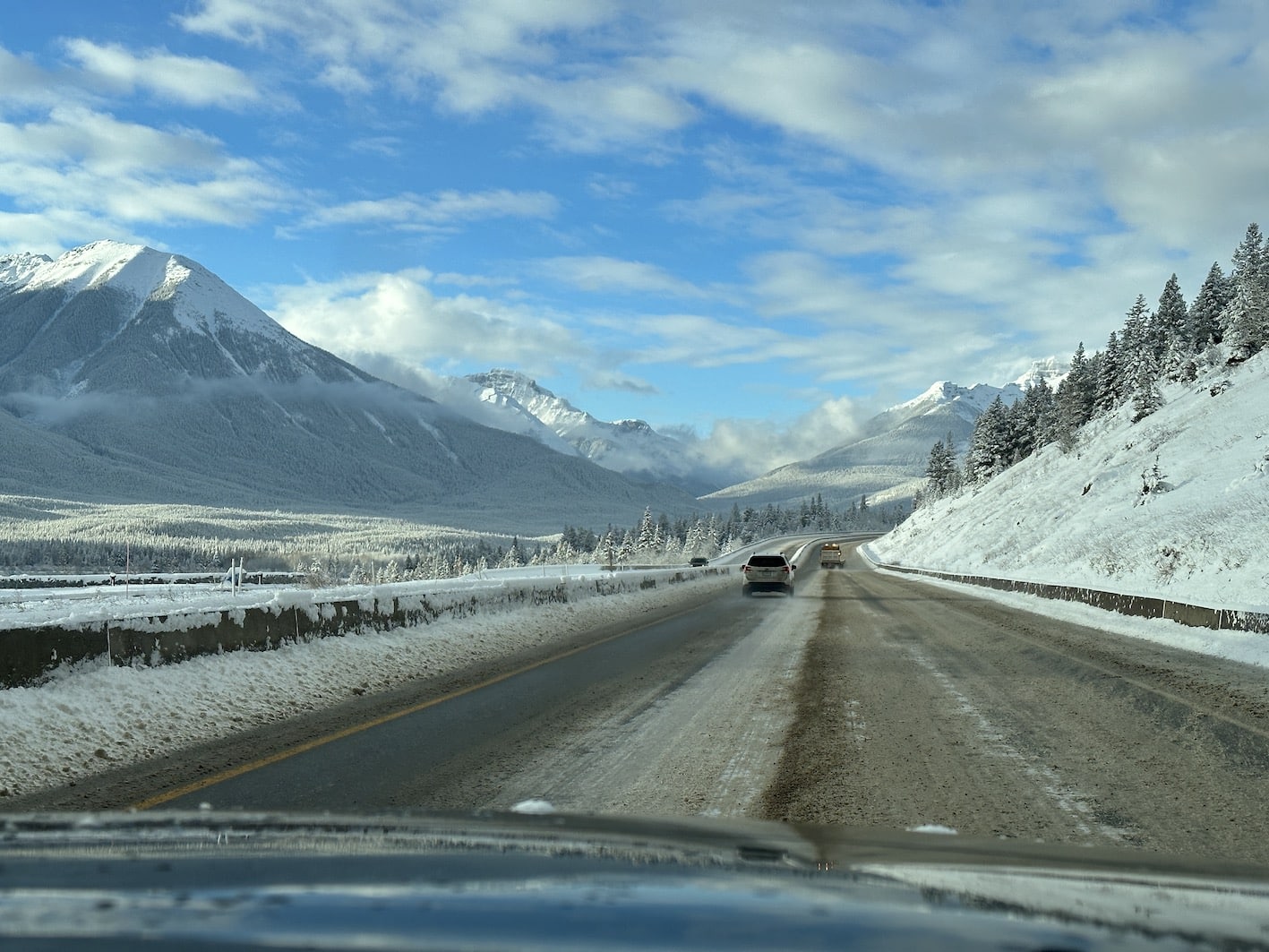
Parks Canada and local authorities have worked diligently over the years to make Banff more bus, bike, and pedestrian-friendly, and there are now many options to help visitors move around Banff without a car. As a testament to these efforts, Banff’s regional bus service, Roam Transit, broke ridership records in 2023 with 2 million passengers!
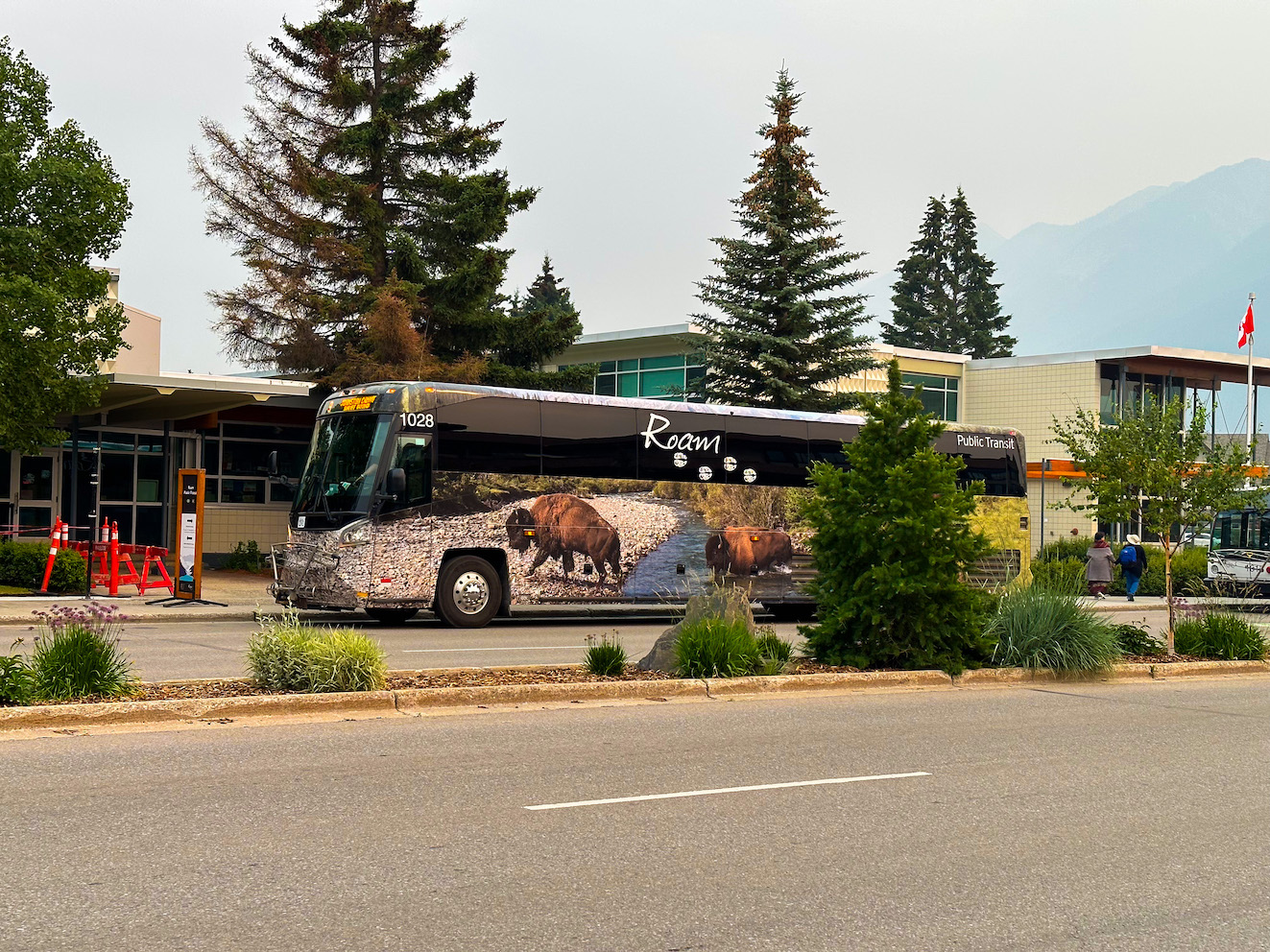
If you are considering going car-free in Banff, rest assured that you’ll be in good company and that other wheeled options like shuttles and public transit are available to help you enjoy the Park’s most iconic sites. Remember that a National Park Pass is still required for your stay, even if you visit Banff without a car.
How to Visit Banff Without a Car
Getting to Banff
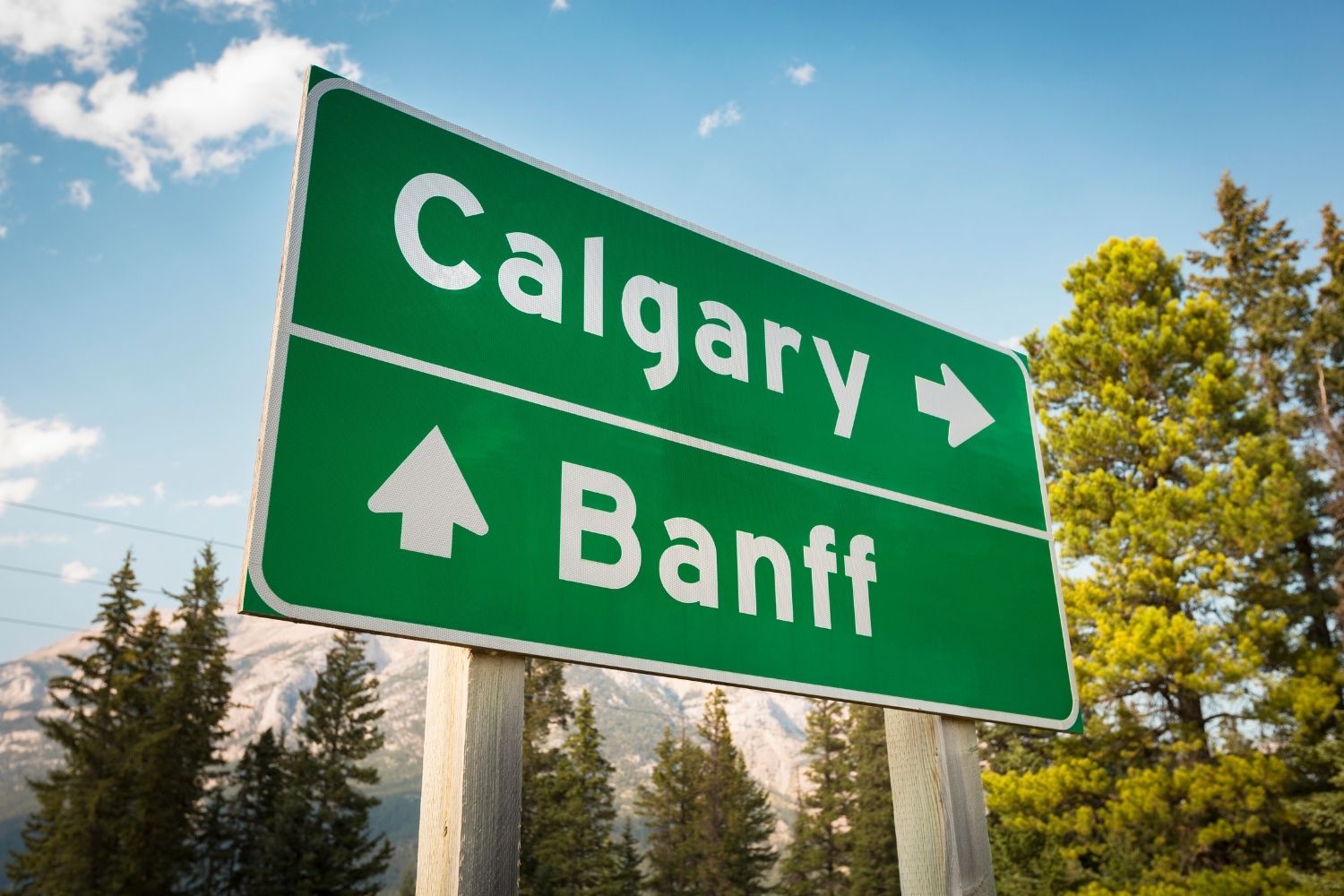
With the closest airport, Calgary International Airport, located over 100km away, connecting to Banff without a rental car may initially seem daunting. Fortunately, airport shuttles and regional buses cater to visitors and residents alike. These bus services offer the chance to watch the impressive scenery instead of the roads. No need to worry about missing a turn when the driver knows exactly where to go!
Shuttles From the Airport
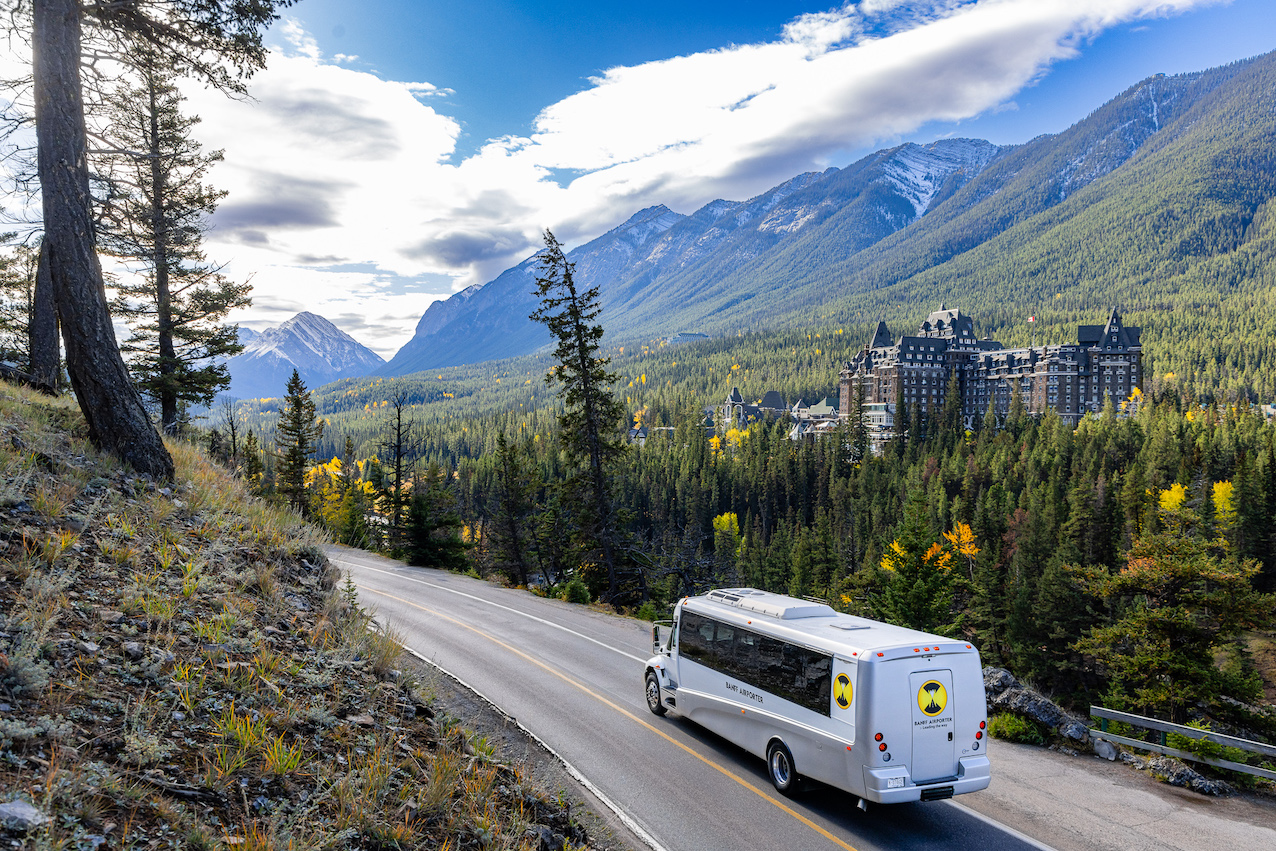
Several well-established companies operate shared public shuttles to and from Calgary International Airport. Most use minibuses or large sprinter vans to transport passengers along the Trans-Canada Highway. By public transport, it takes about 1 hour and 20 minutes to travel from Calgary to Canmore and 2 hours to travel from Calgary to Banff.
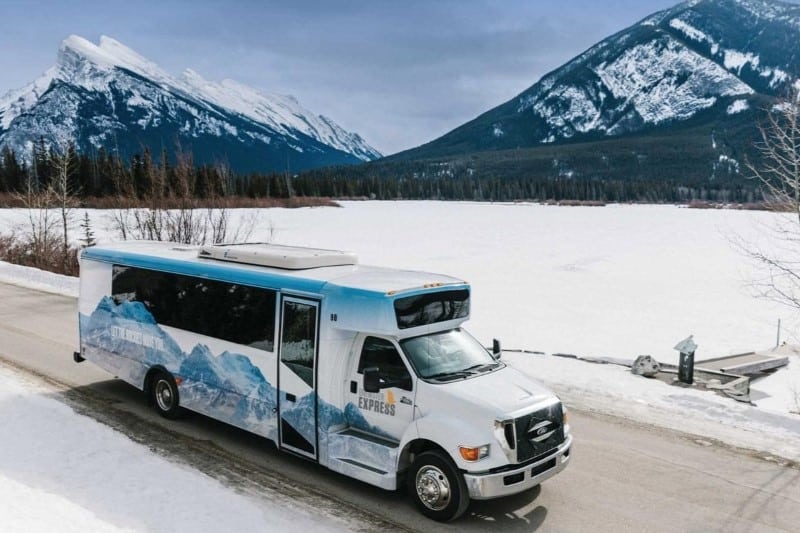
All shuttles run on a fixed schedule, with established pick-up and drop-off times. While door-to-door service is typically offered in Banff, there are only set stops in Canmore (often the Coast Hotel), meaning you’ll need to get to a specific location to catch the shuttle.
Very few operators continue to Lake Louise. Brewster Express is the most convenient option if staying in this area. Consult each operator’s websites for detailed schedules by season and for information on coordinating with flight itineraries.
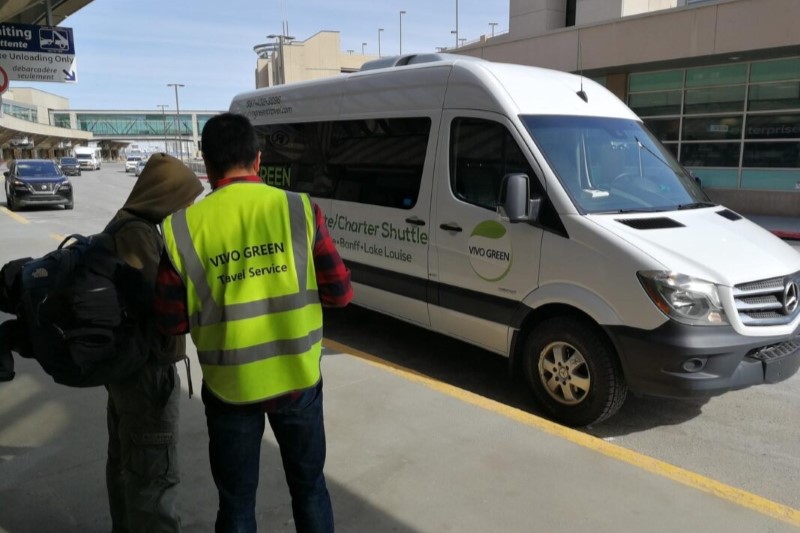
Ticket prices vary slightly by operator, ranging between $50 and $80 per trip, with most offering slightly reduced rates for drop-offs in Canmore and discounts for roundtrip bookings. To secure a shuttle ride, purchase a ticket online in advance. The Banff Airporter does have a kiosk near baggage claim in the Calgary Airport but may not always have availability on the next outbound shuttle, particularly during busier times of the year, like the summer and winter holidays.
Once on board, you’ll find the trips quite comfortable. All vehicles are modern, air-conditioned, and usually equipped with charging ports for electronics. You’ll also have the chance to recharge as you sit back and watch the scenery scroll by.
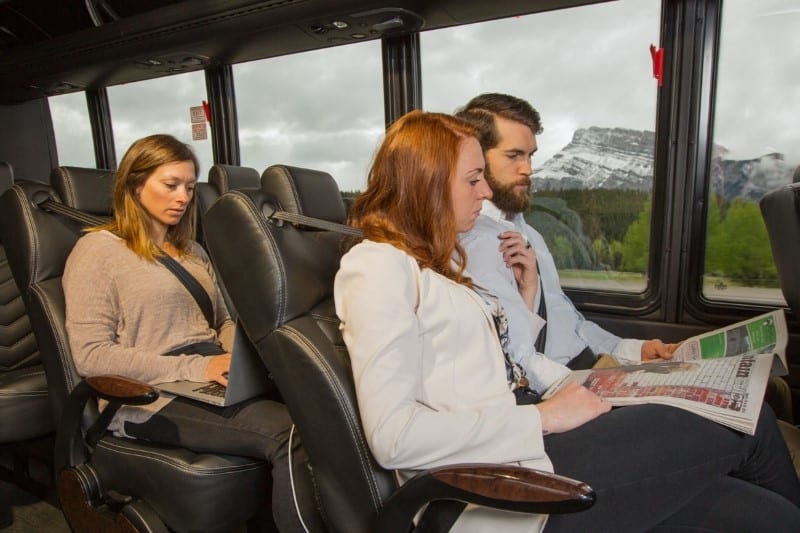
Luggage allowances are similar to airline allowances, and the vehicles can also accommodate ski or snowboard gear in the rear storage compartments. The same cannot be said for pets, as shuttles only allow service animals on board.
The table below briefly outlines shuttle options between the airport and Banff. Checking how the schedules align with flight itineraries and accommodation locations will be most helpful in guiding shuttle selection:
| Operator | Cost (one-way, adult ticket) | # of Daily Trips | Key Features |
| Banff Airporter | $77 – 80 | 10 | Set stops Connects to downtown Calgary and the airport Canmore stop: Coast Hotel Ski/snowboard surcharge Free onboard WiFi |
| Brewster Express | $79 (to Canmore/Banff) | 9 | Serves all Banff hotels and a few in downtown Calgary Canmore stop: Coast Hotel Some shuttles to/from Lake Louise Free onboard WiFi |
| VivoGreen | $55 – 59 | 7 | Door-to-door service in Banff Canmore stops: Grand Rockies Resort & Solara Resort Sometimes, has an option to book a connection to Lake Louise |
Buses From Downtown Calgary
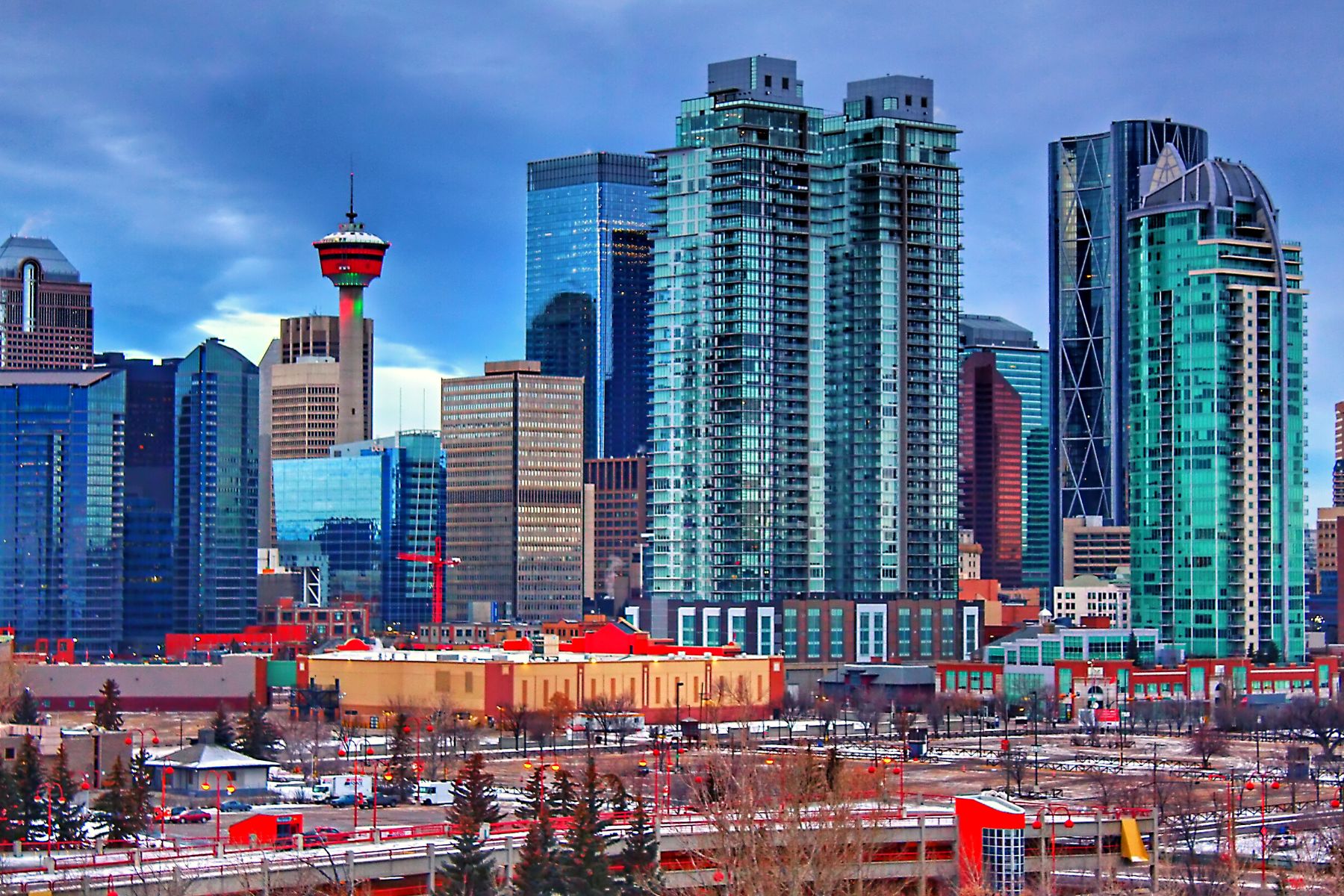
The seasonal On-It Regional Transit service is the most affordable way to travel between Banff and Calgary. Between May and September, a $13 one-way fare will get you a bus ride between Calgary’s Downtown area and Canmore or Banff. They are also operating a service from Calgary direct to Lake Louise on weekends in 2024, and are running buses from Calgary to Moraine Lake during the fall season, so make sure to pay attention to their website.
These buses are most convenient if you spend time in Calgary, as the service does not extend to the airport. Instead, On-It caters to the high demand for weekend travel by running buses on Fridays, Saturdays, Sundays, and statutory holidays on Mondays.
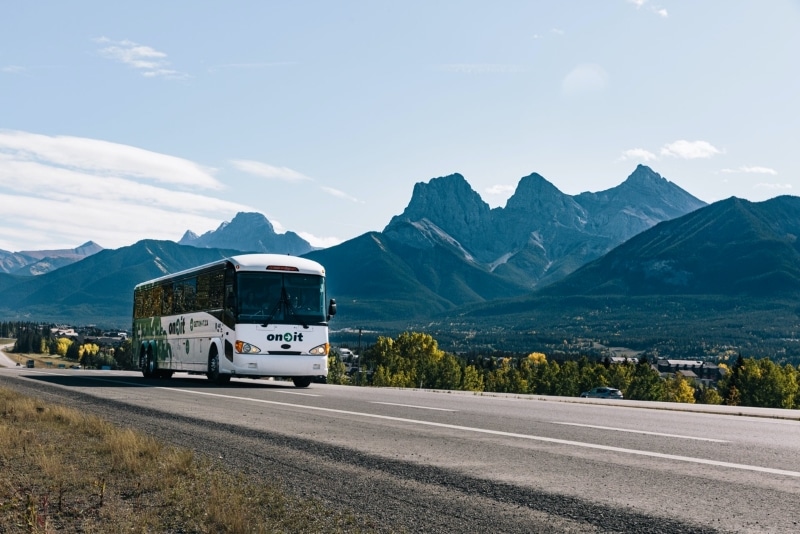
There are three stops in Calgary, one in Canmore, and one in Banff, all well-connected to local bus routes and major destinations. On-It riders can also connect to Banff’s Local Roam transit routes 1, 2, 4, and 6 for free on the same day of travel.
You can purchase On-It tickets online using card payment or buy when boarding from representatives at stops using cash or a card. If tickets are purchased online, remember to download or print the ticket to present to the driver.
New this year is the option to book the Flixbus from Downtown Calgary to Banff. There are multiple daily departures, and the bus rides take between 1.30 and 2 hours. Rates start at $12, which is an absolute steal. Buses have free WiFi and outlets. Every time we ride Flixbus, we’re reminded of how comfortable the seats are!
Regional Bus Stops to Bow Valley Map
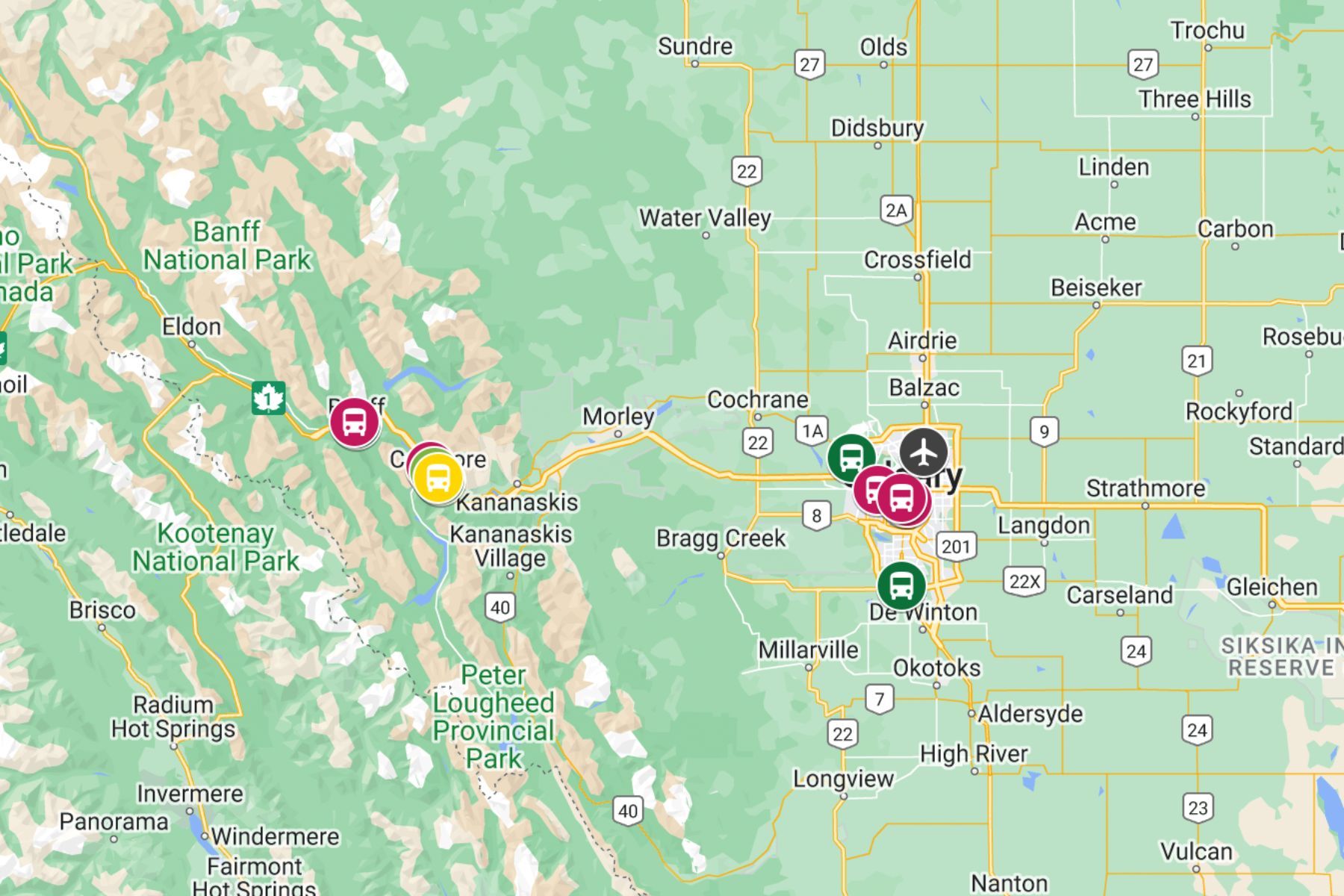
Connecting to British Columbia
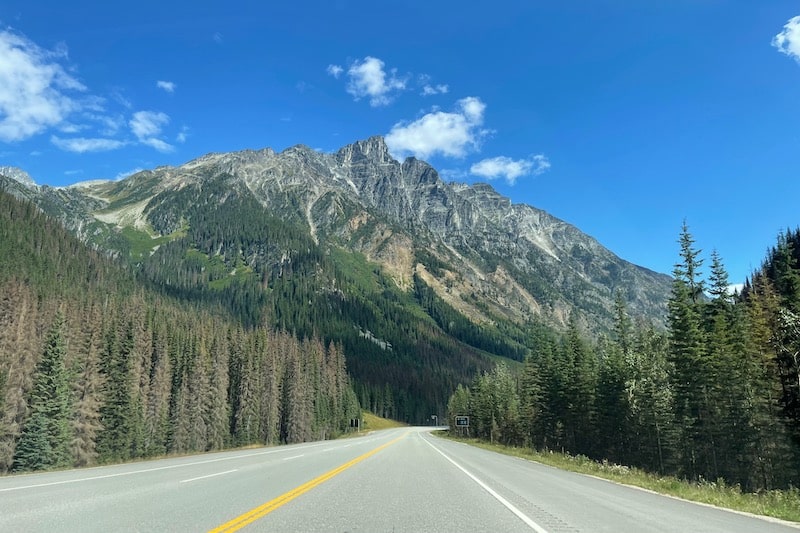
Most visitors to Banff arrive via Calgary, but for those arriving from or continuing onwards to British Columbia, the regional coach bus Rider Express operates a daily service between Calgary and Vancouver with stops in Canmore, Banff, Lake Louise, Field, Golden, and Revelstoke, among others.
You’ll find the westbound Calgary to Vancouver schedule and the eastbound Vancouver to Calgary schedule here. Overnight buses also run in both directions twice a week with slightly fewer stops. Ticket prices vary by distance, up to $162 one-way.
Connecting to Jasper
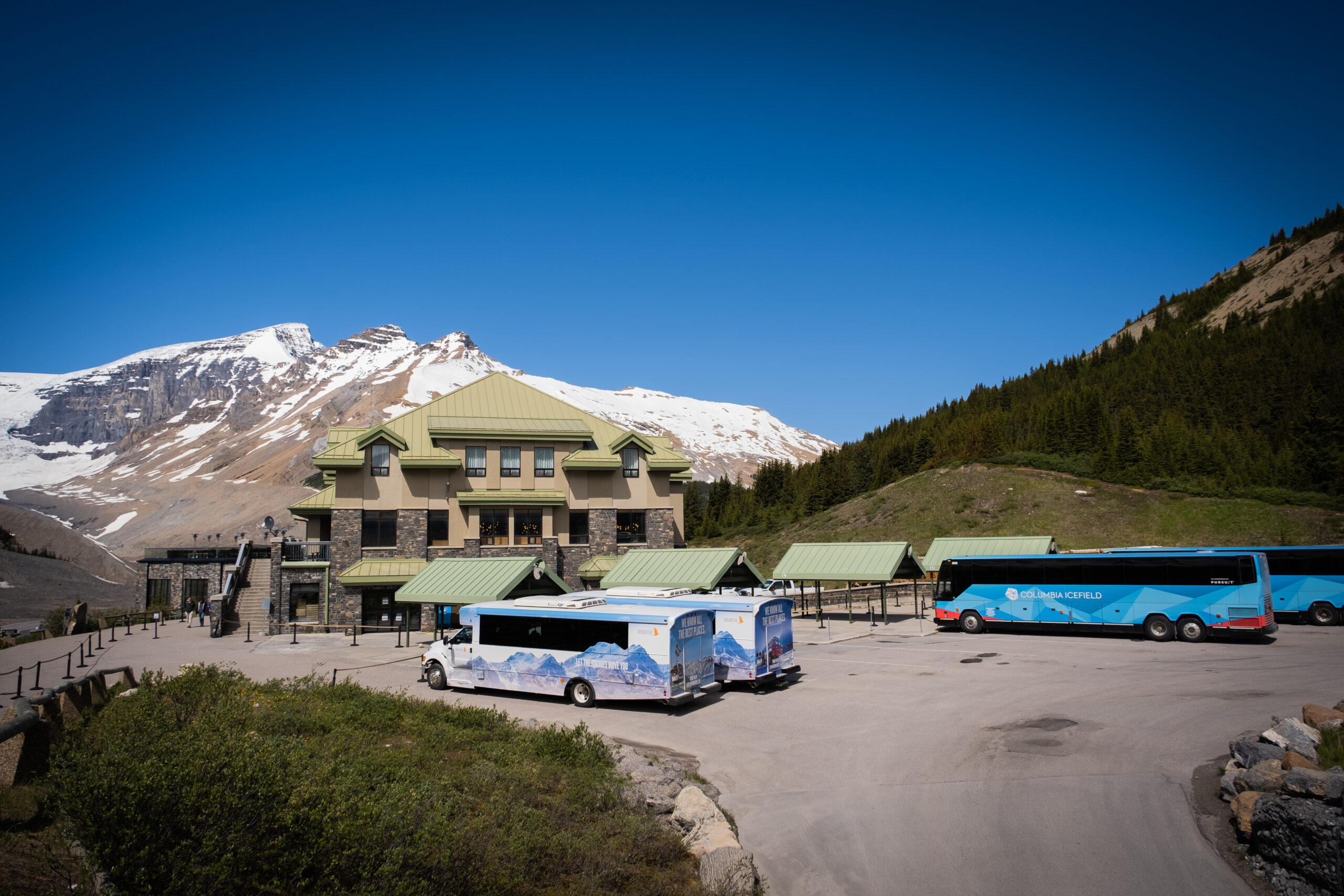
Travel between Jasper and Banff by bus is also possible with operators like Brewster Express and Sundog Tours, which run daily shuttles along the spectacular Icefields Parkway. Be sure to buy a ticket in advance to guarantee a ride. A connector bus to Edmonton can complement their Rockies trip with urban explorations or access another international airport.
Getting Around Banff Without a Car
Roam Transit
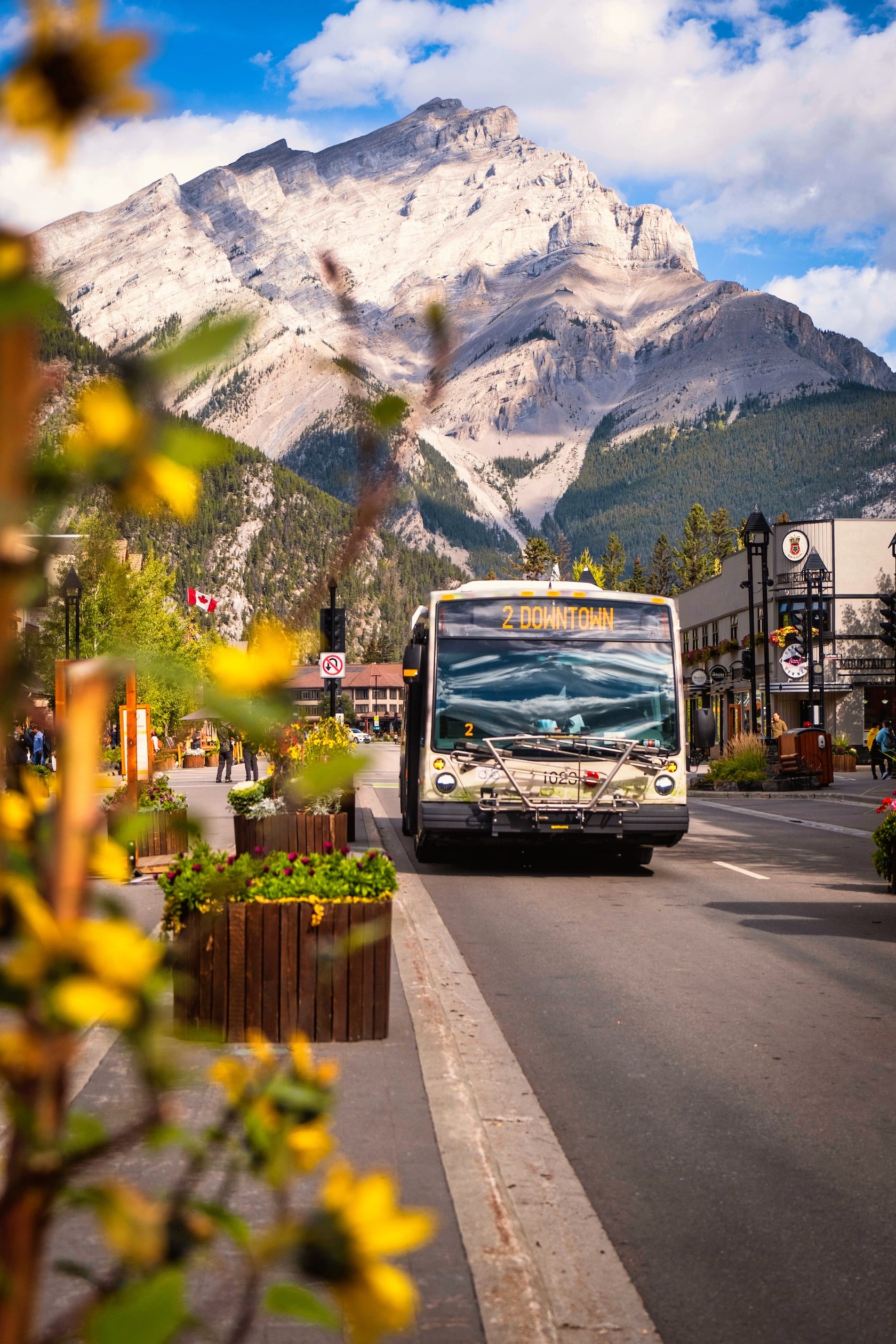
Once you’re in Banff, you’ll likely want to travel around and explore many of the Park’s spectacular sites. Fortunately, a reliable regional transit system serves the Bow Valley, providing access to many destinations too far for walking or biking from the town centers.
Roam Transit buses connect people to the most popular and iconic places in the National Park, providing an affordable, stress-free alternative to driving and making it possible to visit much of Banff without a rental car. You can plan a complete car-free itinerary just using Roam Transit!
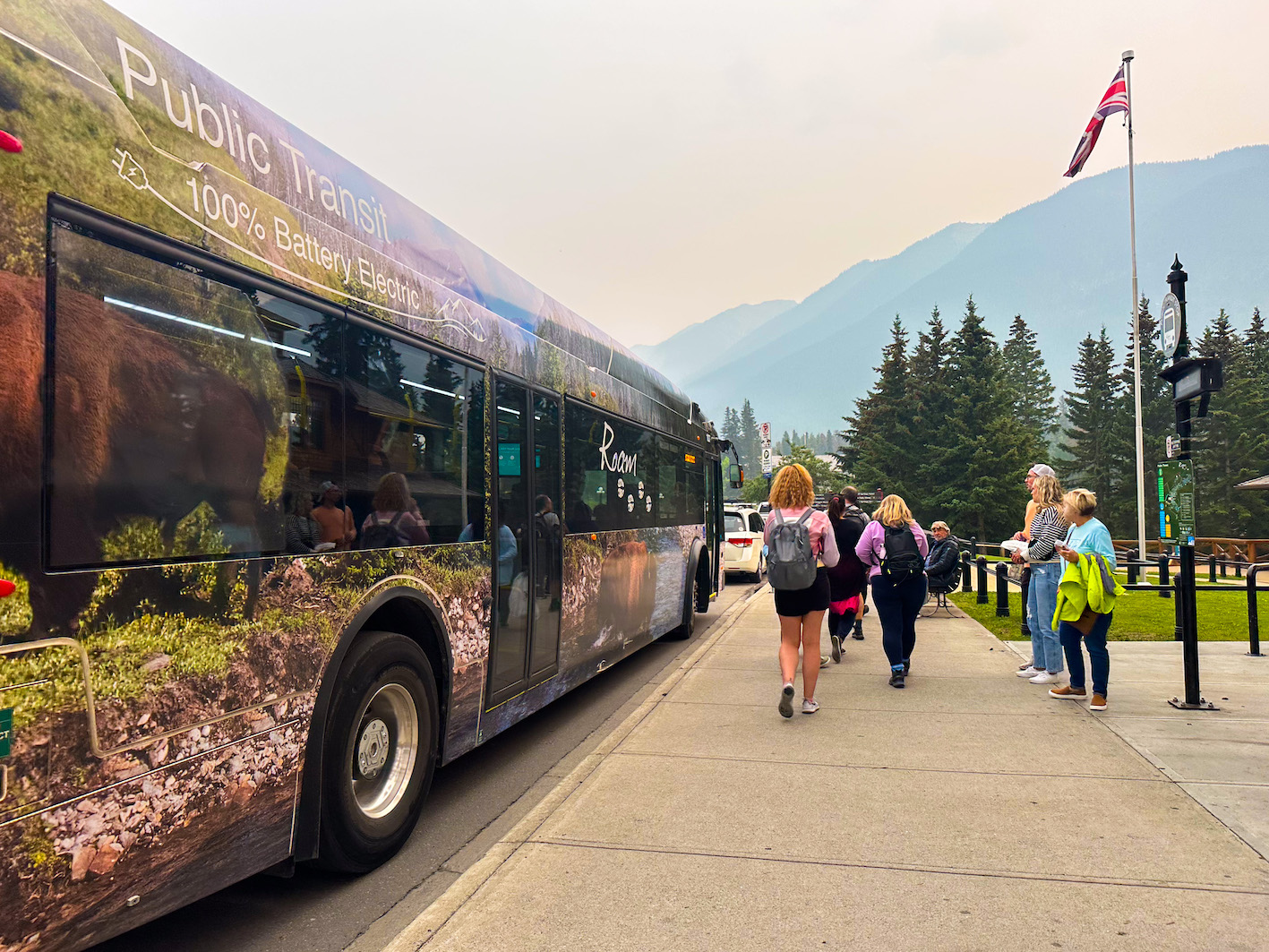
Roam Transit also boasts the most beautiful buses in Canada, if not the world. Complementing the renowned natural landscapes, each vehicle is wrapped in imagery by local wildlife photographers featuring animals that ‘roam’ the Bow Valley. Hence, the bus service’s name.
The fleet of hybrid-electric vehicles also protects the valuable mountain environment by keeping the air clean and enabling more people to visit Banff without paving this paradise to put up another parking lot.
Where Can You ‘Roam’
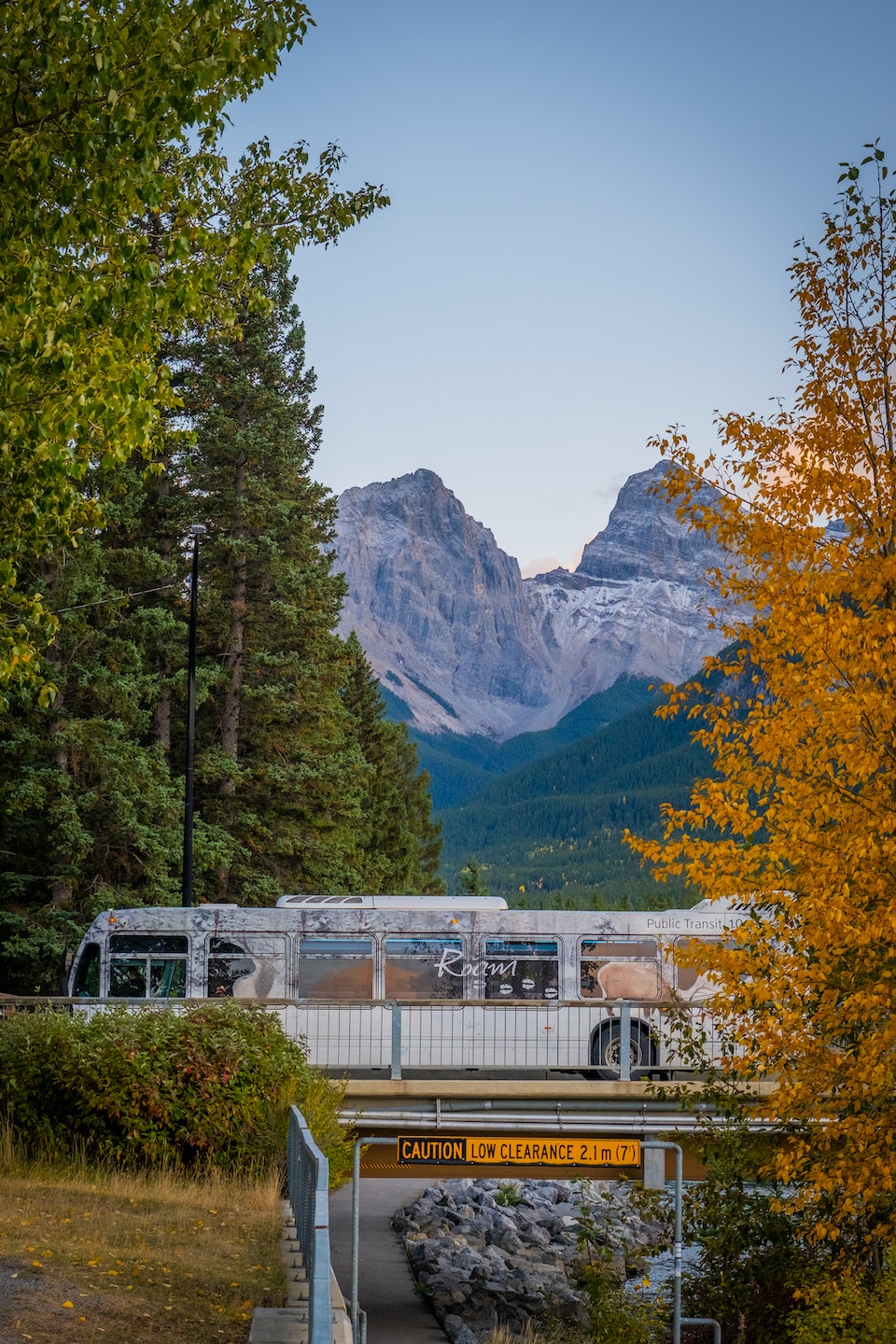
With 10 routes through the Bow Valley, connecting Canmore, Banff, and Lake Louise, you can even access a number of campgrounds by bus! The routes vary somewhat by season, with year-round core routes serving Banff and Canmore towns as well as these popular places:
- Lake Louise
- Johnston Canyon
- Banff Gondola / Sulphur Mountain
- Upper Hot Springs
- Banff Springs Hotel
The Town of Banff has two local routes that run regularly along Banff Ave, with Route 1 extending up to the Banff Gondola and Upper Hot Springs and Route 2 meandering between the Tunnel Mountain Campground area and the Banff Springs Hotel.
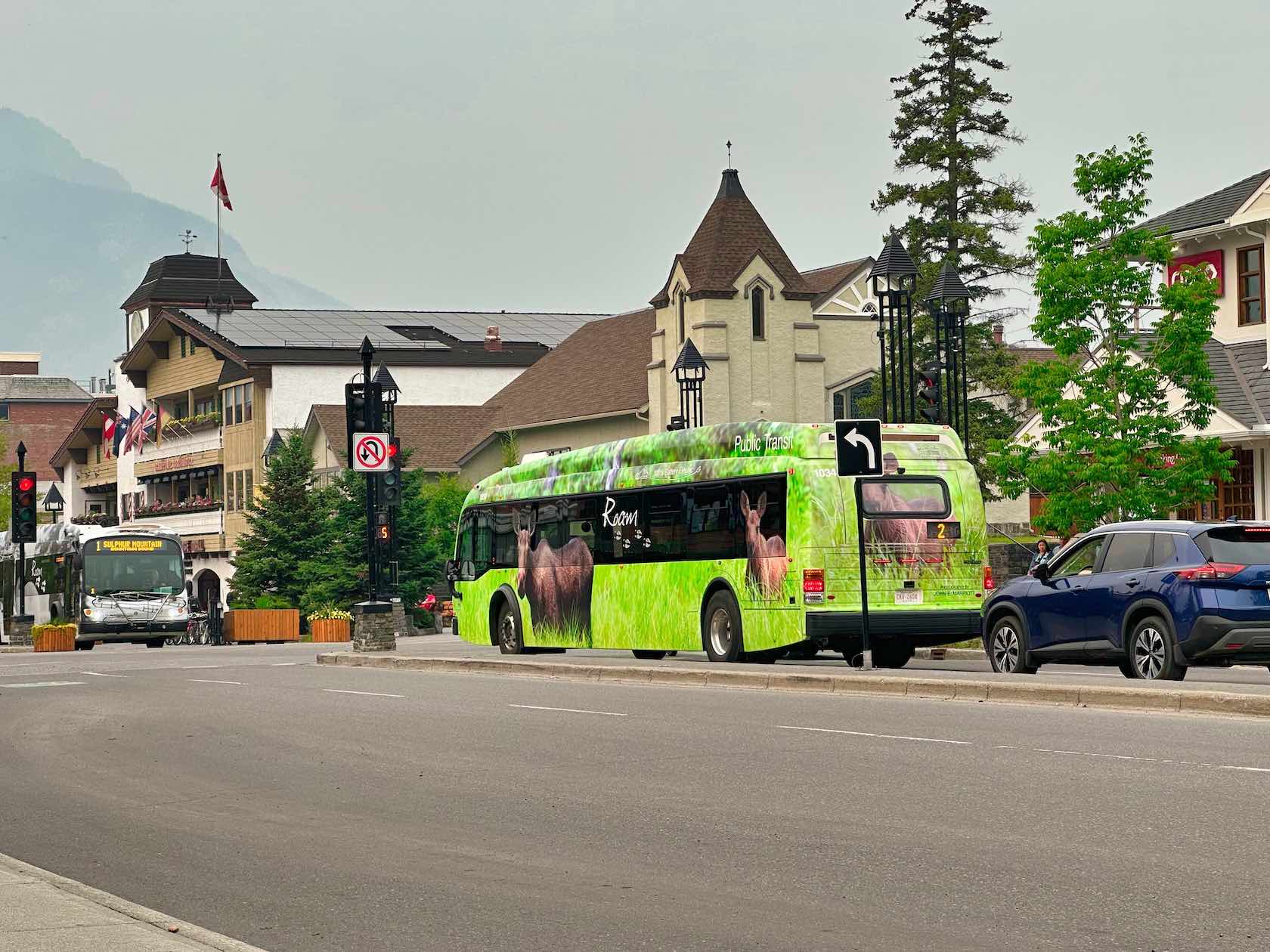
In the summer, two more local routes are added. Route 4 connects downtown Banff to the Cave and Basin area, while Route 6 goes to Lake Minnewanka with stops at Cascade Ponds, Johnson Lake, and Two Jack Lake (including campgrounds!). In 2024, most of these services will begin on May 17th and run until Mid October.
Roam buses are probably the easiest way to visit those popular lakes along with Johnston Canyon, Lake Louise, and Moraine Lake, which are places with high visitation and limited parking. Regional Route 9 travels from Banff to Johnston Canyon via Castle Junction (weekends only in winter), while Route 8X provides direct service between Banff and Lake Louise (village and lakeshore) year-round.
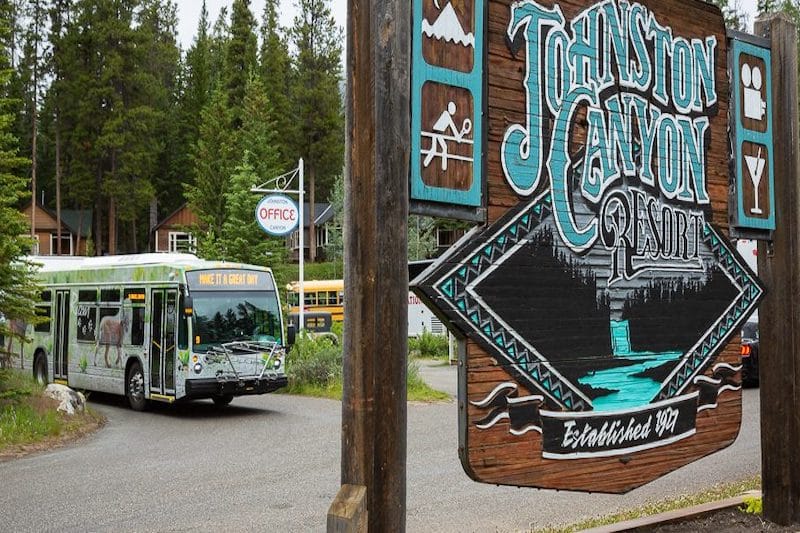
For three weeks in September, Roam Transit buses also go to Moraine Lake (Route 10). Transferring to Parks Canada’s Lake Connector Shuttle with a Super Pass from Roam Transit is also possible.
Canmore and Banff are connected 7-days a week, year-round, by the regional Route 3, which runs on a loop between the two towns from about 6 a.m. to midnight. The bus will get you between the two towns in less than 30 minutes, bypassing any lineups at the Park gates. You can view a PDF map with all bus routes on Roam Transit’s website.
Planning a Trip
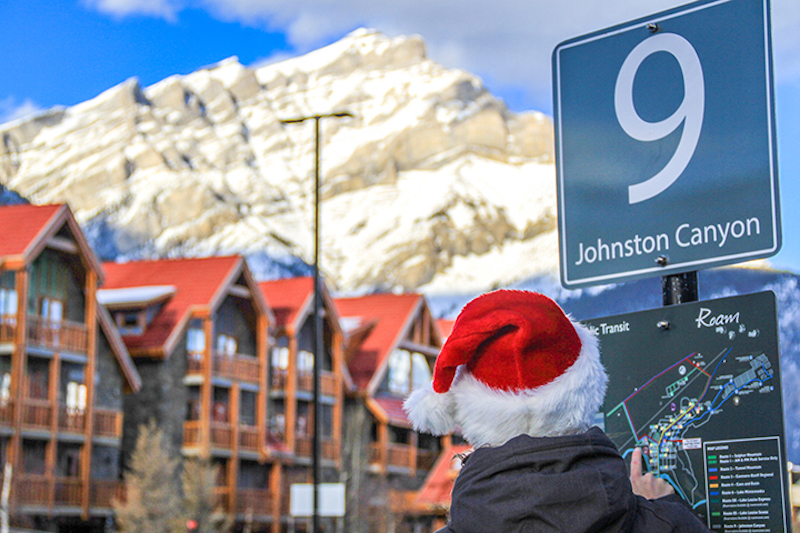
To plan a bus trip on Roam Transit, consult the schedules and route maps on Roam Transit’s website or use the handy trip planner on their landing page. Downloading the app Double Map on your smartphone (available through Apple or Google Play) will also allow you to see live bus locations and arrival times. Without technology, you can consult the system information posted at stops.
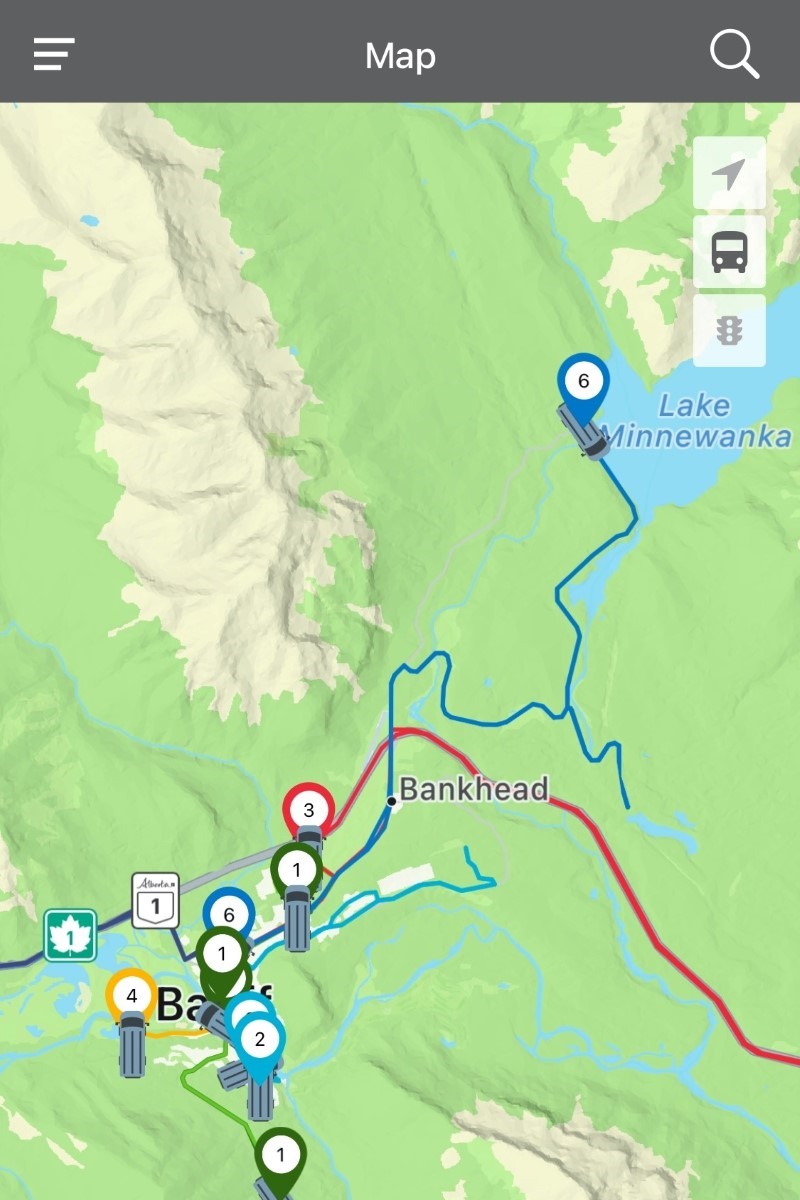
Using the system maps, identify the route that serves your intended destination(s) and locate the nearest stop to start the trip. If not boarding from a terminus, check the bus direction.
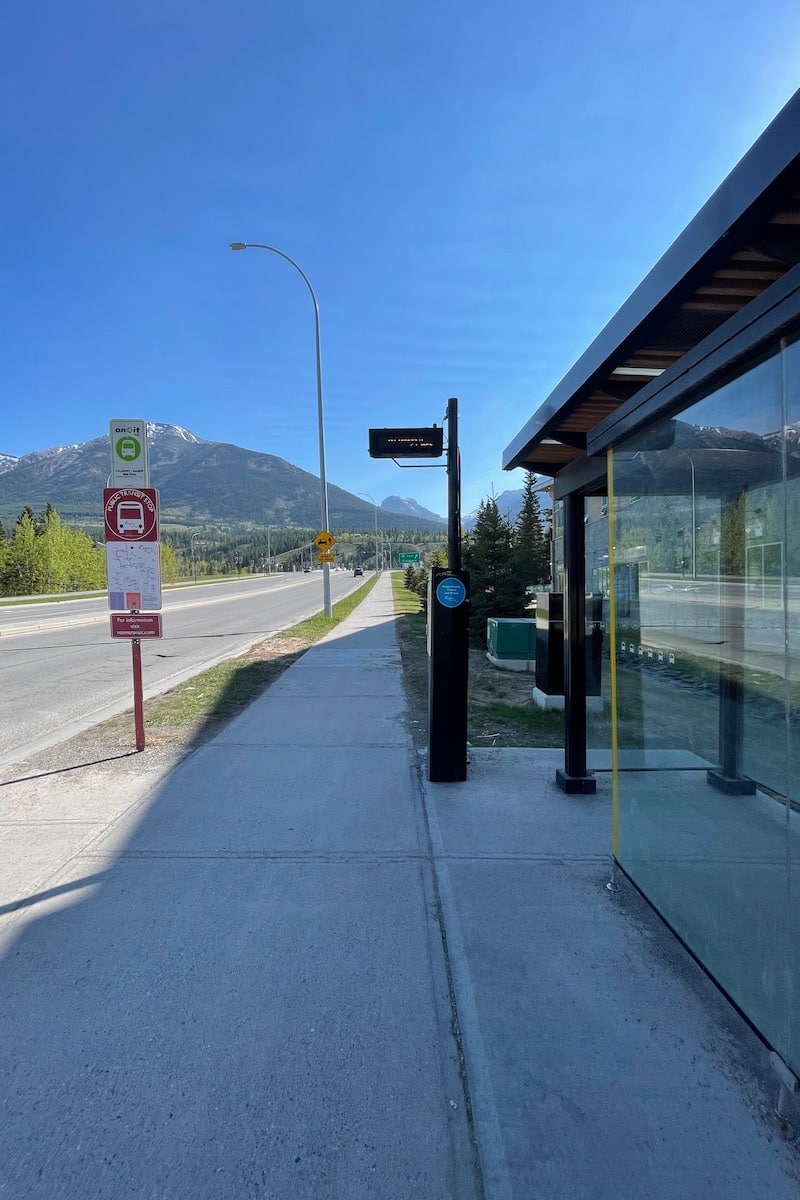
When on Roam, remember that all buses lead to the downtown Transit Hub at Banff Ave and Elk Ave (except for Canmore local buses). Your trip will likely start or end from these stops, particularly if traveling outside the town.
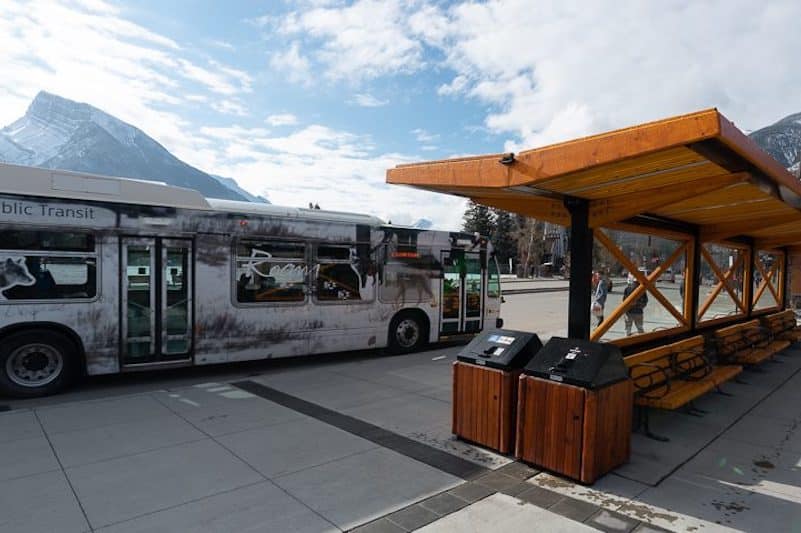
The published schedules will indicate bus frequency, while the live location maps allow you to see bus locations in real-time. LED signs at some stops also indicate when the next bus will arrive, helping to minimize wait times.
When embarking on excursions by bus, always budget enough time to catch a bus back! Planning ahead where you want to go, how many bus trips you’ll make, and the number of bus travel days will help inform what bus ticket to buy.
Buying a Ticket
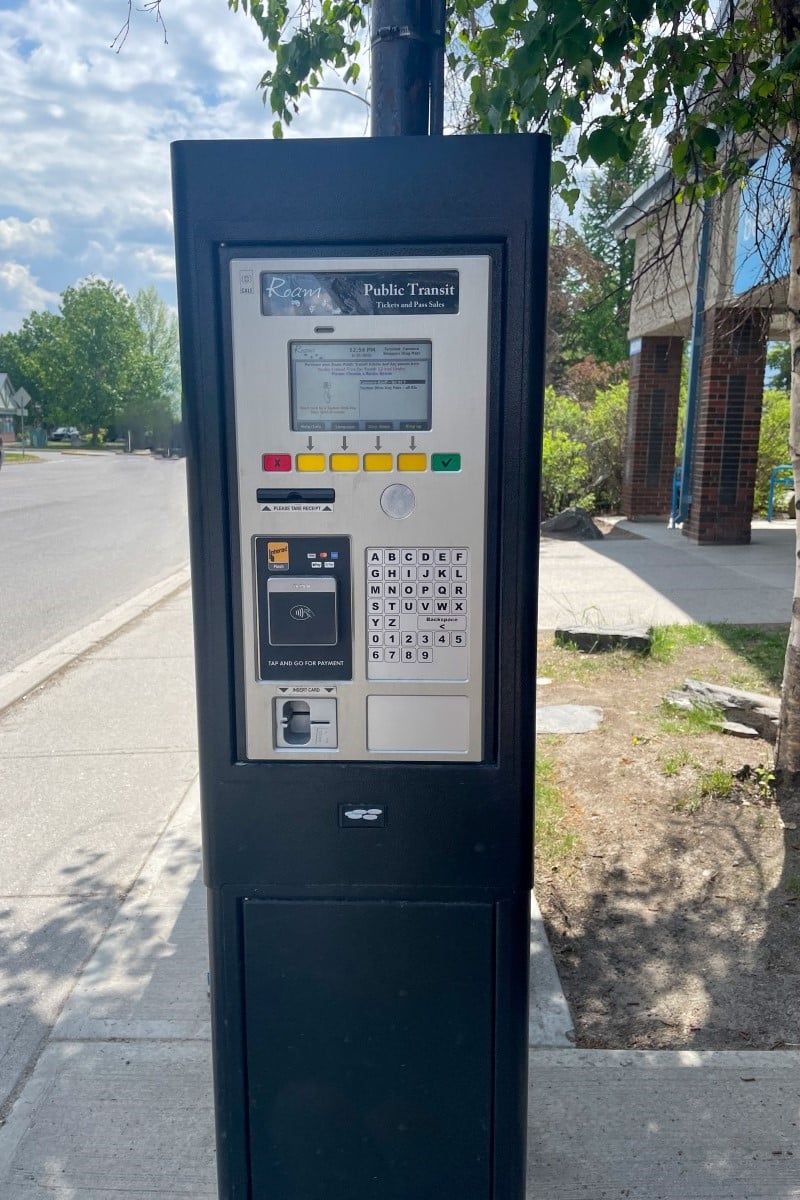
Most Roam buses operate similarly to transit systems in large cities, with no required reservations. You can simply walk up to the stop and purchase a ticket from a vending machine or onboard the bus (chip-enabled credit cards accepted and U.S. and Canadian currencies on board).
You can purchase and display passes on your smartphone by downloading the Token Transit App. The app also includes a function to send passes to other mobile numbers, which is handy when buying tickets for family or friends.
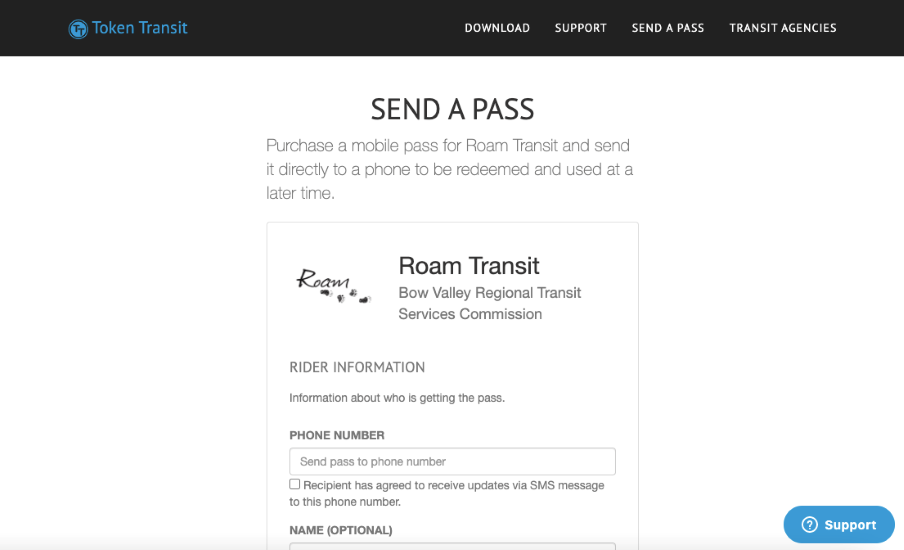
Roam Transit fares vary by route depending on the distance traveled. So, a local bus from downtown Banff to the gondola will be cheaper than traveling to Lake Louise on a regional route. Fares remain affordable, ranging from $2 to $10 per trip.
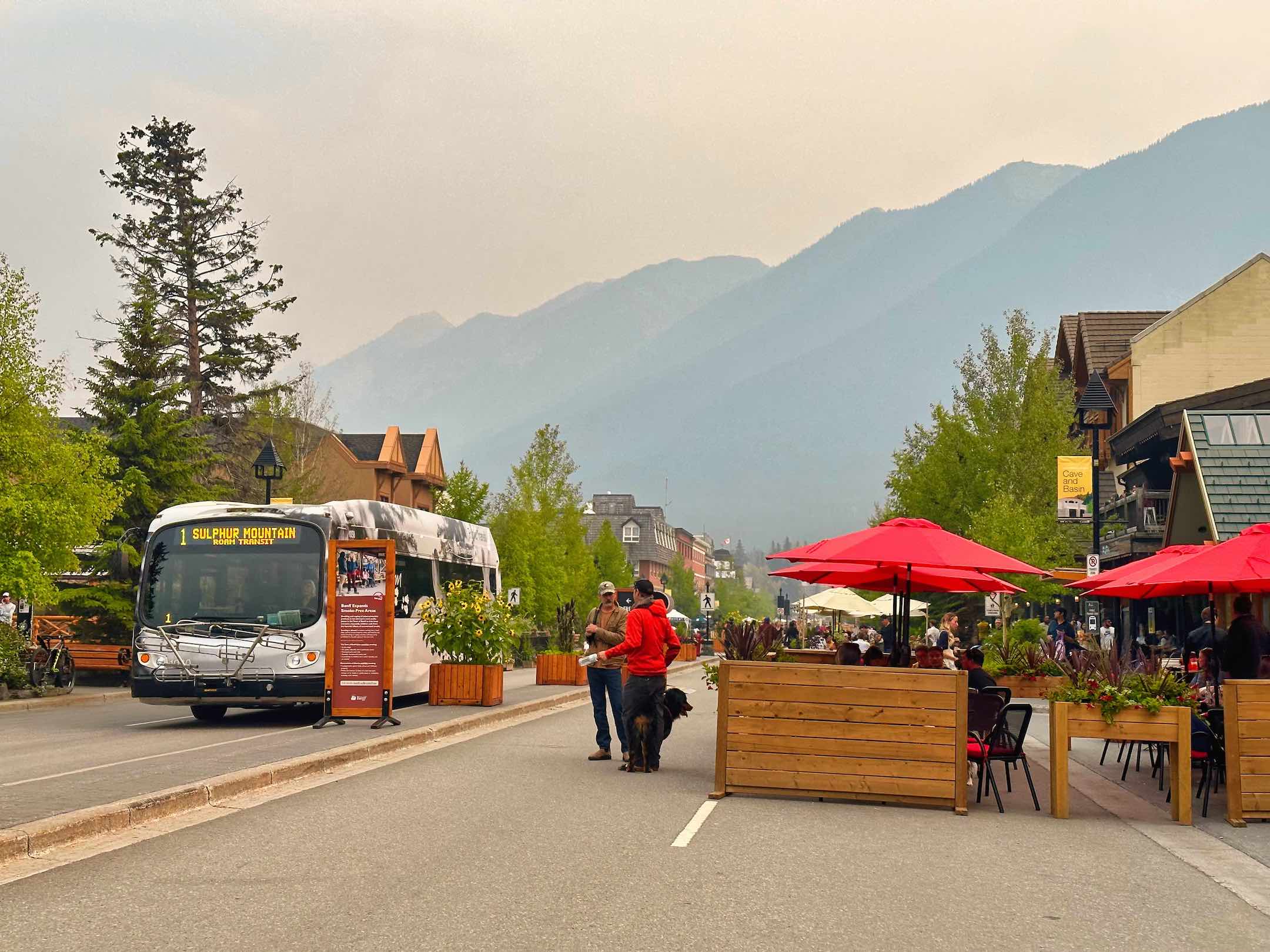
Discounted fares are also available for youth aged 13 to 17 and for seniors over 65 years, while children under 12 ride all buses for free. Some hotels in Banff provide guests with free local transit passes for Routes 1, 2, 4, and 6 (see which hotels here). And all the local buses in Canmore (Routes 5C and 5T) are free!
When purchasing a ticket, you can either pay for a single ride fare or purchase a day pass that will allow for 2-way travel and may also allow you to connect to other bus routes. If buying a pass, you’ll need to consider the different ‘zones’ of travel. While a regional pass will also be good for travel on local service, a local pass will not be accepted for regional travel.
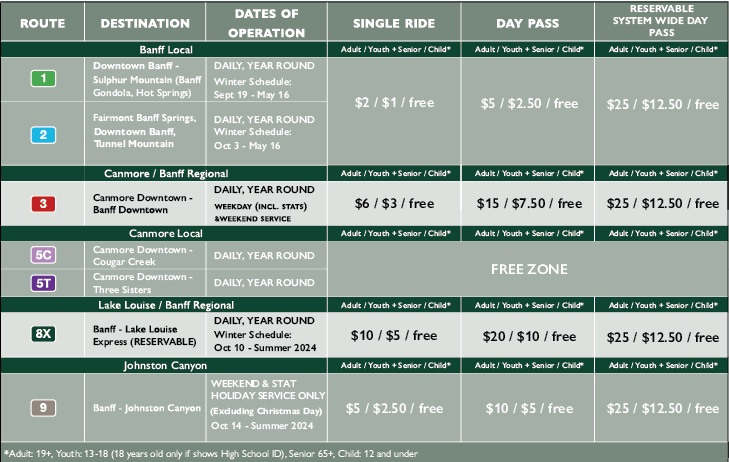
For routes to the Lake Louise area, tickets for specific dates and times can be reserved through Roam Transit’s online reservation system. Unlike a walk-on fare or pass-through Token Transit, this reservation guarantees a spot on a specific bus.
For those looking to cover a lot of ground in one day and connect to Moraine Lake, a Roam Transit Super Pass will give you the option to secure spots on buses between Banff and Lake Louise while providing unlimited travel on all routes as well as access to the Parks Canada Lake Connector Shuttle to Moraine Lake (when operating).
The Roam Super Pass
Roam Super Pass
During the 2024 summer season, the Roam Transit Reservable Super Pass provides all route access for one day. For $25, this One Day Reservable Super Pass allows unlimited travel on all Roam routes, including Canmore, Banff, and Lake Louise. Additionally, it is the sole fare option granting access to the Parks Canada – Lake Connector Shuttle between Lake Louise Lakeshore and Moraine Lake.
The Reservable Super Pass must be pre-purchased exclusively online at Roam Transit. Show your valid Roam Reservable Super Pass to Parks Canada staff at the Lake Louise Lakeshore or Moraine Lake to receive your Parks Canada boarding pass.
READ MORE: How to Get to Moraine Lake
Bus Etiquette
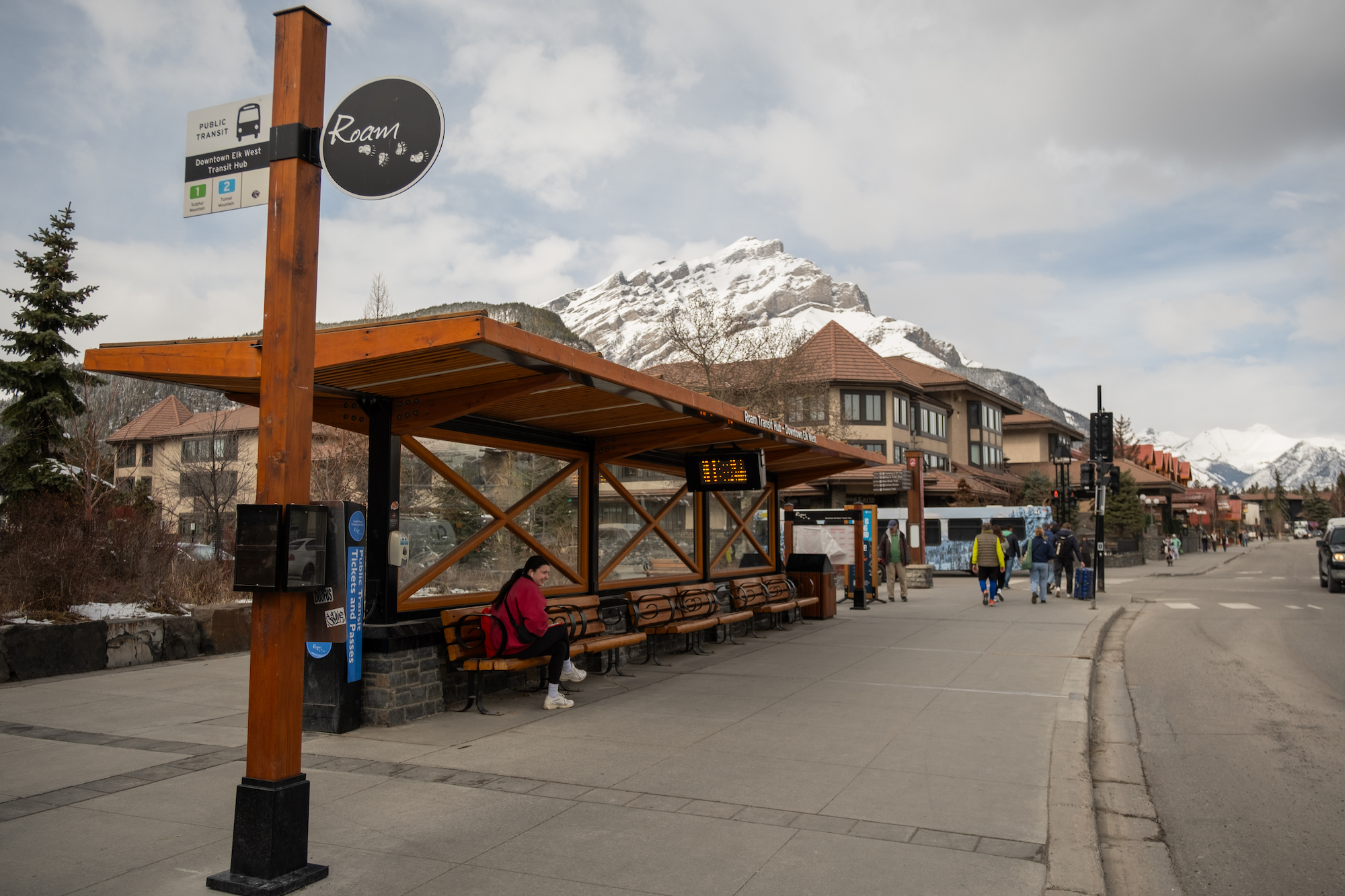
Even for seasoned straphangers, it takes some time to learn the unique quirks of a new bus system. Keep these tips in mind when riding Roam for a smooth, enjoyable journey:
- Board at the front of the bus and exit at the rear to keep stops quick and efficient.
- Seats near the front of the bus are reserved for families, seniors, and those with disabilities, who may also need assistance exiting at the front of the bus.
- Keep bags and backpacks on your lap so seats are available for other riders.
- Bikes can be transported by mounting onto the external racks at the front of the bus. Watch the instructional video on Roam’s website or ask the driver for assistance with this system.
- If standing during the trip, keep exits and the aisle clear as much as possible.
- Remember that buses are a confined space, so strong scents and sounds should be kept to a minimum so as not to disturb other passengers.
- Push the red button to signal to the driver that you’d like to get off at the next stop. Upcoming stops are usually announced shortly before arrival.
- Do not litter at the stops or on the bus. Or anywhere in the Rockies for that matter.
- Bus operators are friendly and helpful, so don’t be afraid to ask questions or seek assistance.
The Parks Canada Shuttle
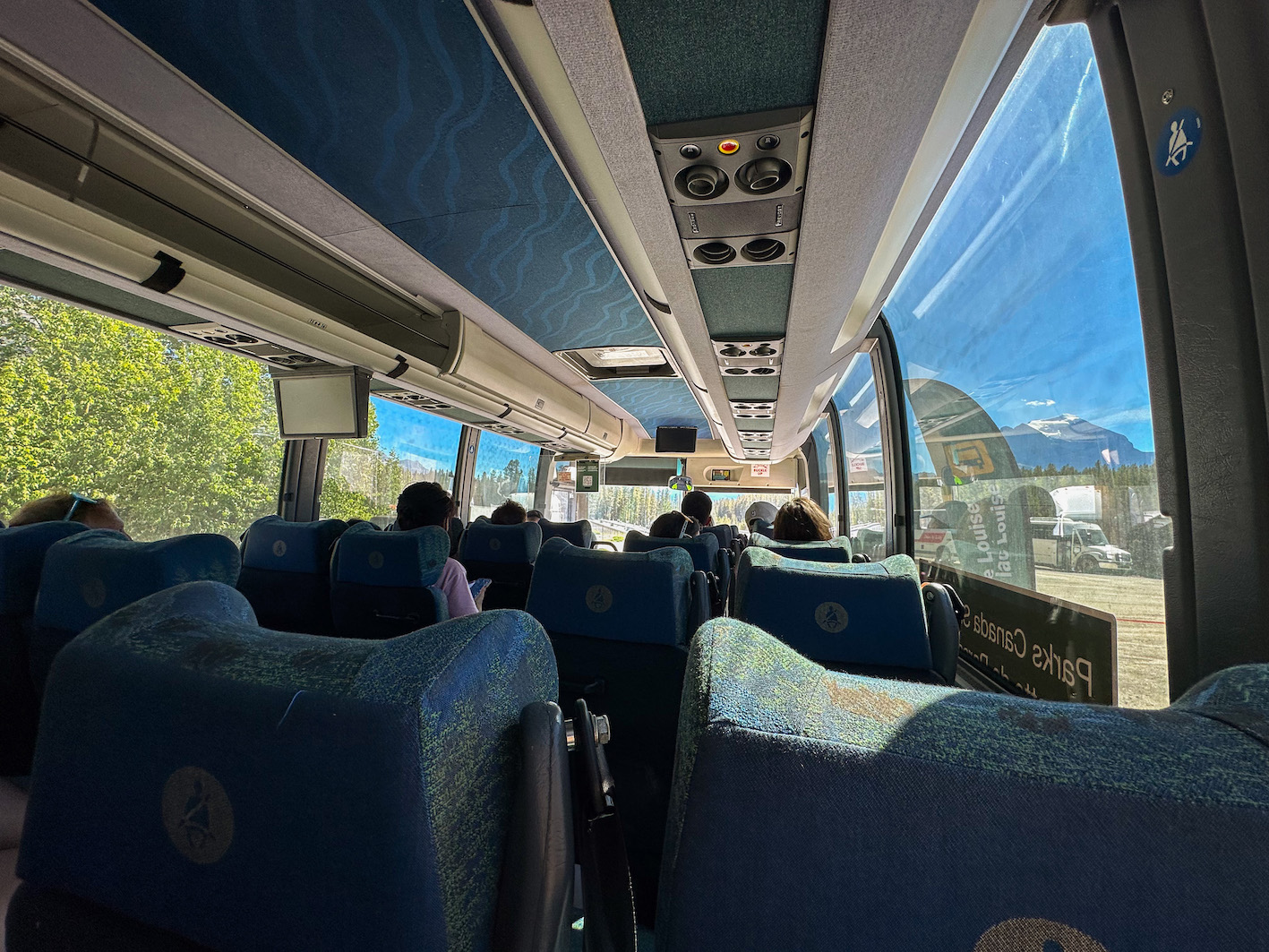
To accommodate high visitation to Lake Louise and Moraine Lake, Parks Canada runs a shuttle system, which allows more people to visit these highly coveted areas. The shuttles only circulate within the Lake Louise Area, departing from the Park and Ride at Lake Louise Ski Resort (GPS POINT), so are best suited to those driving into this area.
If busing from Banff, opting for a Roam Transit Super Pass will grant access to the Parks Canada Lake Connector Shuttle between Lake Louise and Moraine Lake. You would not need a separate reservation through Parks Canada. Connector shuttles are boarded on a first-come first-served basis to ticket and pass holders. You can read all about the shuttles below:
- All You Need to Know About The Lake Louise Shuttle
- All You Need to Know About The Moraine Lake Shuttle
Ski & Gondola Shuttles
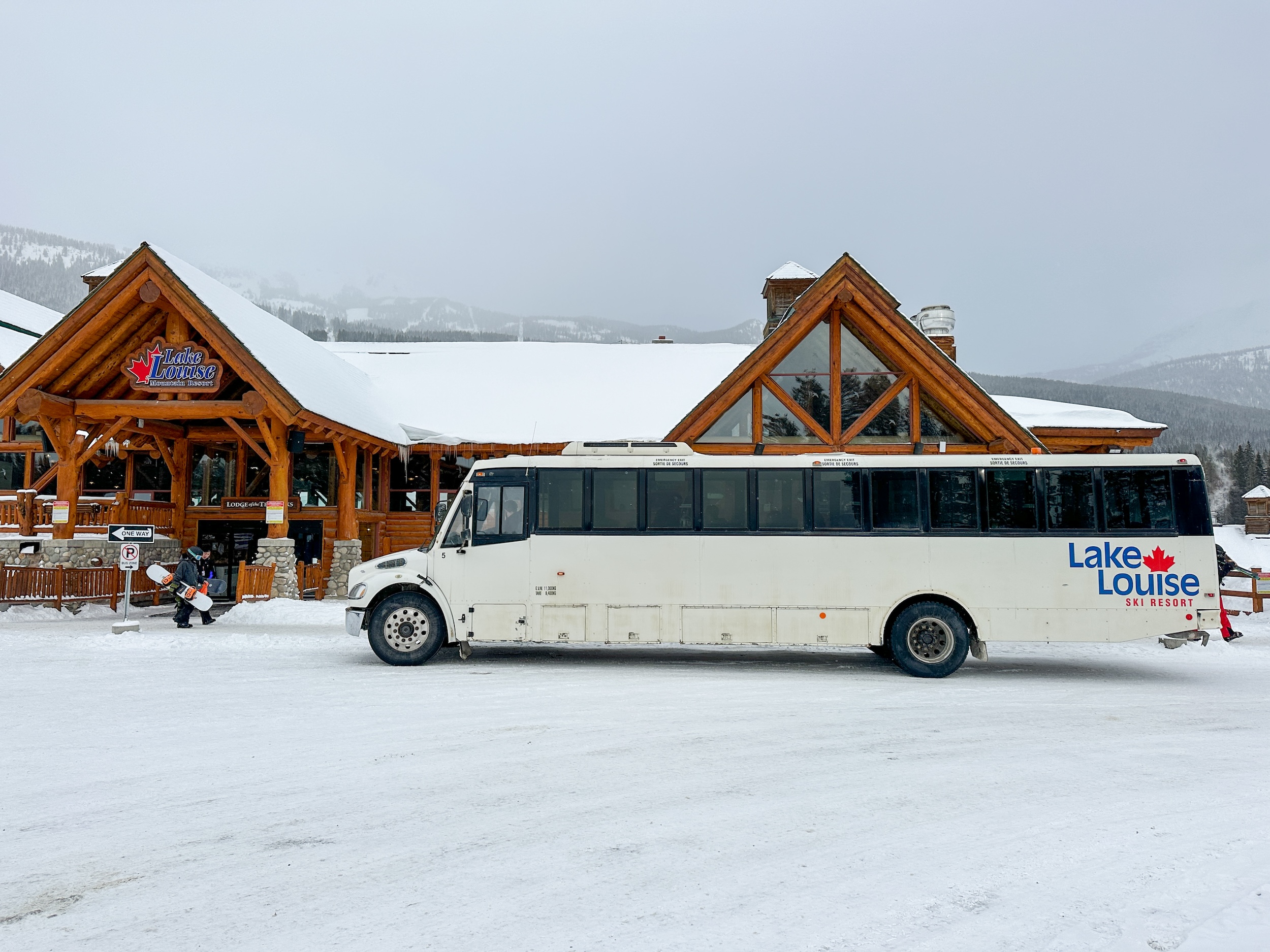
The three ski resorts in Banff National Park – Sunshine, Lake Louise, and Mt. Norquay – run free shuttles in Banff in the winter to bring snow bunnies and their gear from Banff hotels to the lifts during ski season.
Banff Sunshine and Mt. Norquay run a free shuttle service in the summer months to provide convenient access to their sightseeing gondola, chairlift rides (which require payment), and trailheads that lead from the bases. Check each website for schedule and stop information.
Similarly, the Banff Gondola runs complimentary shuttles for pre-purchased tickets up to the top of Sulphur Mountain. A pre-purchased gondola ticket can also be shown for a free ride on Roam Transit’s Route 1. This is also a great way to add the Banff Hot Springs, as they’re an easy walk from the bottom cable station of the gondola.
How to Visit Banff Without a Car: Enjoy a Tour
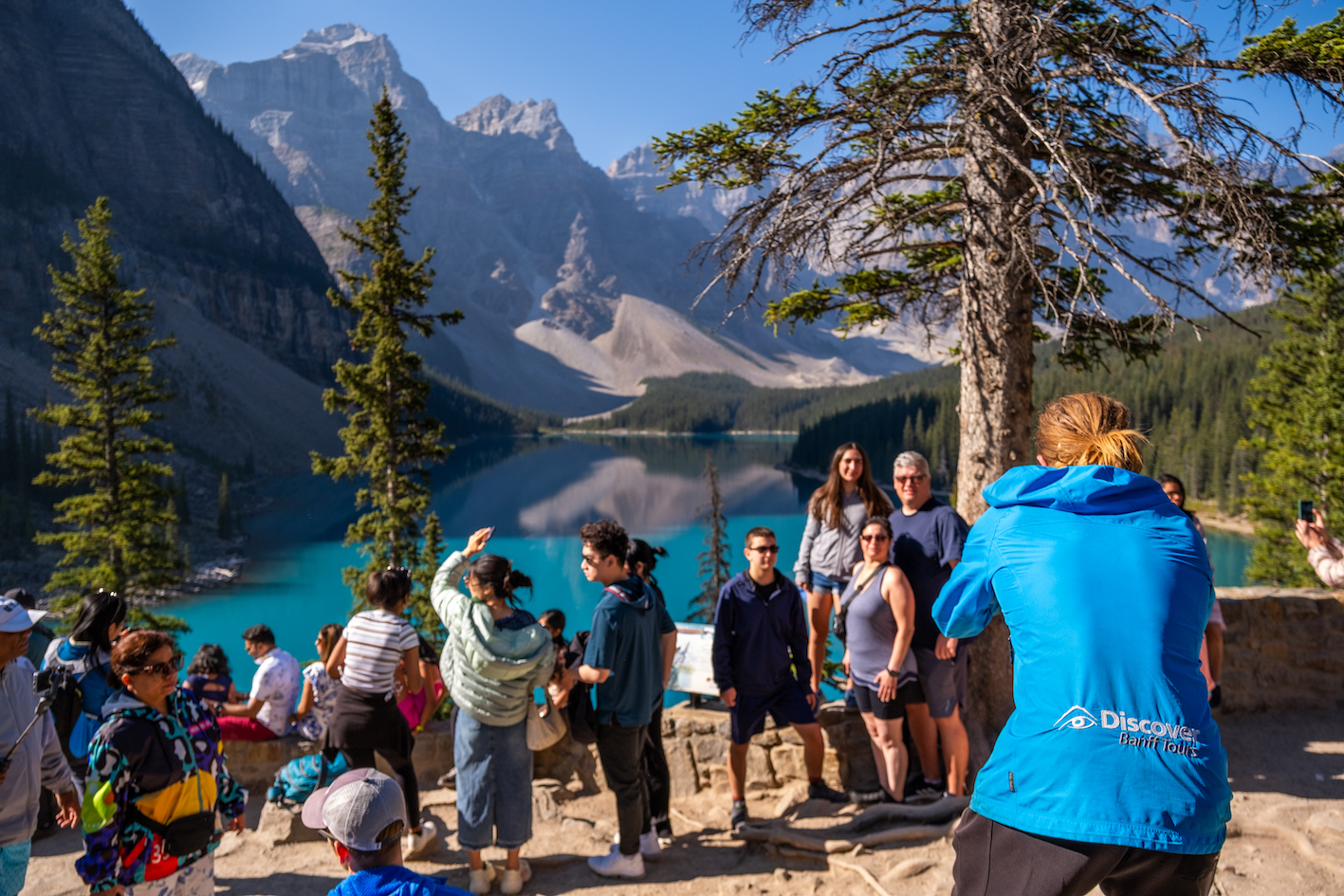
While Banff’s bus networks and services have expanded over the years, they only reach many destinations in the National Park and do not provide access to neighboring Yoho, Kootenay, or Kananaskis Country.
If you have particular hikes or destinations in mind that are not accessible by transit, day trips through one of the many tour companies or private charters may help you reach these more remote areas. Radventures offers small group (max 14 guests) guided tours, starting and ending with hotel pick up in Banff, with local interpretation and an amazing guide on hand to answer questions.
Other Tour Operators in Banff Include:
- WowBanff
- Banff Hop On Hop Off
- Discover Banff Tours
- SunDog Tours
Hop On, Hop Off
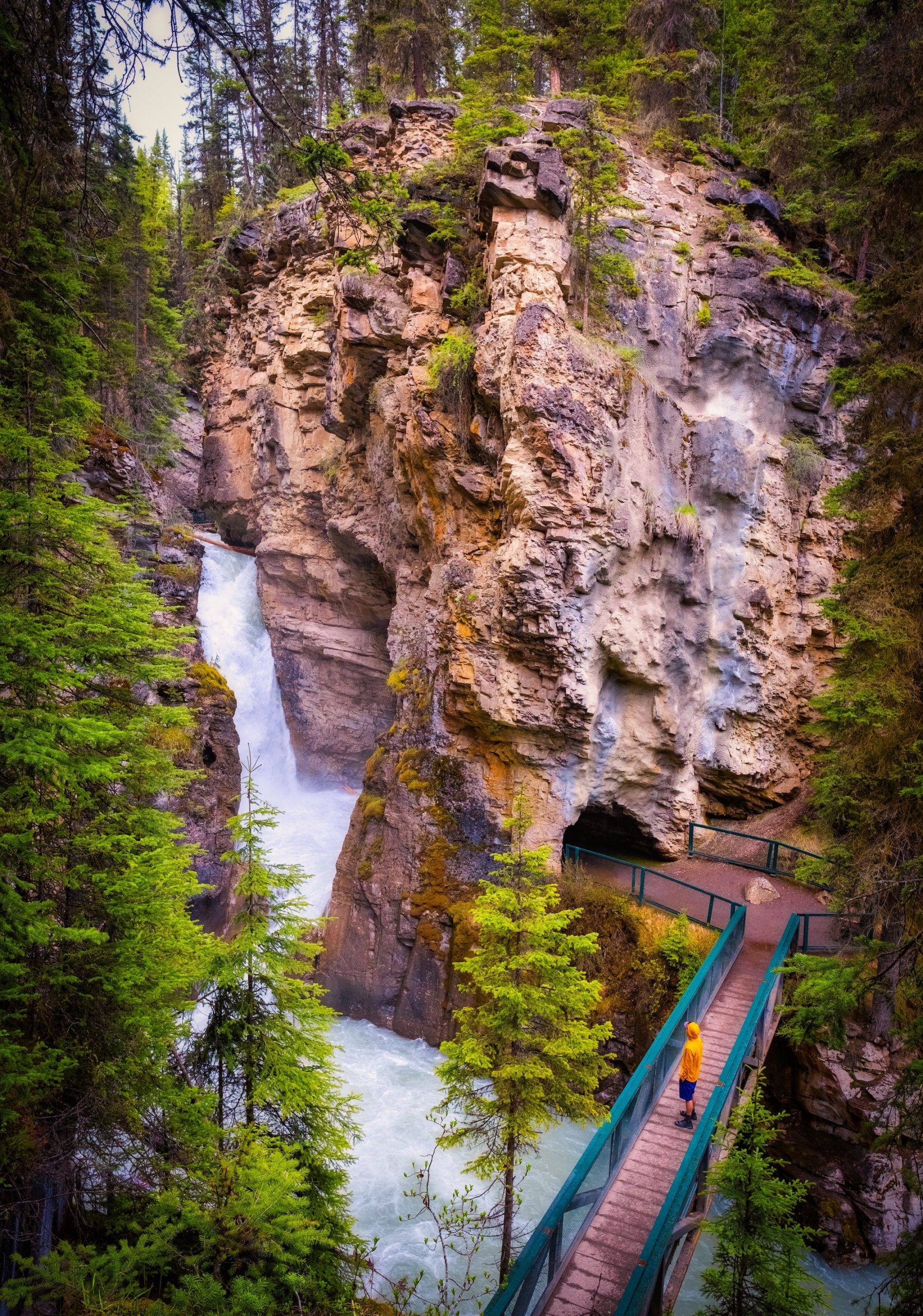
The Banff Hop on Hop Off Bus has become quite popular recently. The hop-on-hop-off bus is exactly what it sounds like – it lets you hop on and off when you want! The bus starts in Banff and stops at Johnston Canyon, Lake Louise Gondola, Lake Louise, and Moraine Lake. We recommend utilizing your time to enjoy some of the Lake Louise hikes, like the Plain of Six Glaciers or Lake Agnes.
Buses depart seven days a week from either the Moose Hotel and Suites on Banff Avenue (7:45 AM, 9:30 AM, and 12:15 PM) or The Banff Heritage Train Station (7:50 AM, 9:35 AM, and 12:15 PM). Just note that the later you depart, the fewer places you can explore. The buses return to Banff at 4:55 PM and 6:00 PM. Book that bus here.
Get to Moraine Lake & Lake Louise From Banff/Canmore
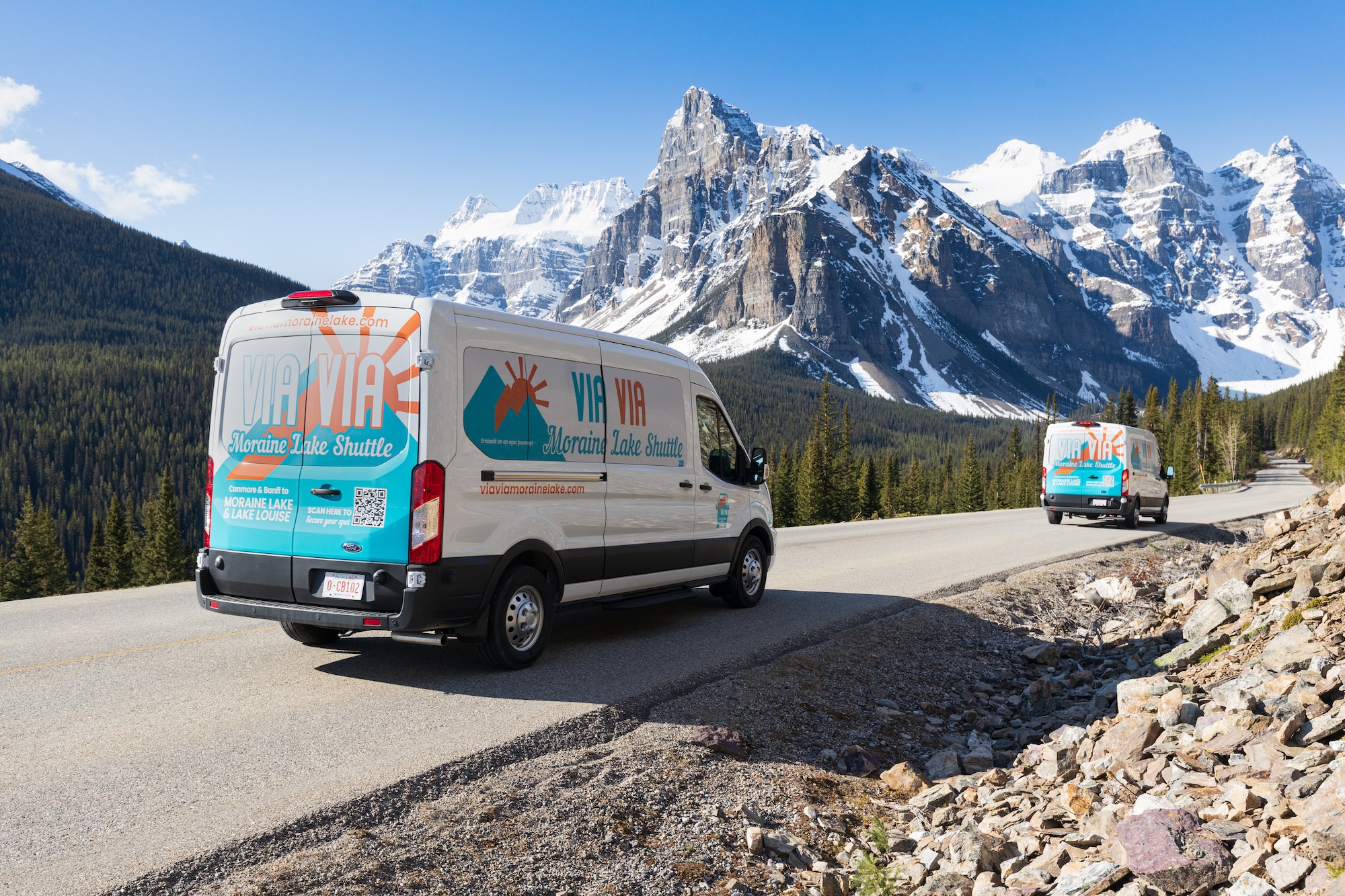
Via Via is a new shuttle company in town that operates sunrise shuttles to Moraine Lake from Canmore and Banff. This is not a tour but a shuttle that will transport you to Moraine Lake at sunrise. They also offer Moraine Lake and Lake Louise Combo Tours that run throughout the day. Their prices are quite competitive, starting at $99 for a sunrise shuttle, and fluctuate from there based on time and day of the week. We find their buses are a fantastic way to get to the famous lakes without a car. Book their service here.
Banff Taxis
There is no Uber in Banff or Canmore. Though there are a few taxi services. Taxi Taxi and Banff Taxi operate from Banff, though taxis are the most expensive option. You can expect a cab ride from Canmore to Banff, or vice versa, to cost anywhere from $50-$80 (one way).
Should You Rent a Car in Banff?
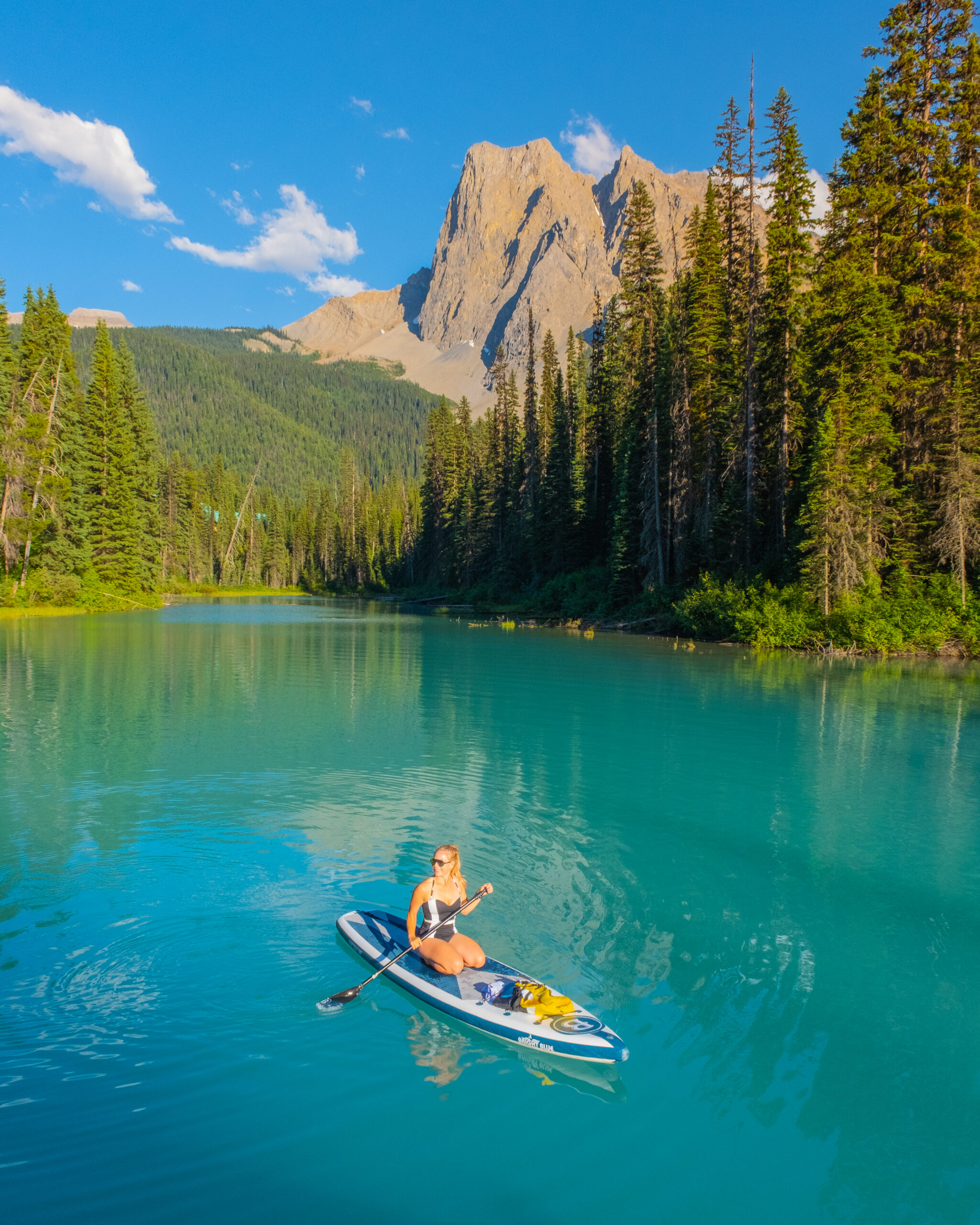
It depends. If you are visiting Banff and plan to spend your days strolling around Downtown Banff, heading up Sulphur Mountain, hiking Tunnel Mountain, and seeing all the top attractions like Lake Louise, Lake Minnewanka, and Two Jack Lake, you can easily get around Banff without a car.
However, maybe you have already visited Banff and seen the majestic Moraine Lake. On this trip, you want to see Emerald Lake in Yoho, hike the Iceline Trail, and venture into Kananaskis. Maybe enjoying some long hikes and scrambles away from the crowds is exactly what you are looking for. If this is the case, you will benefit from a rental car on your trip. The sooner you book your rental car, the cheaper the car will be. We recommend comparing rates on Expedia and Rentalcars.com.
Biking Around Banff
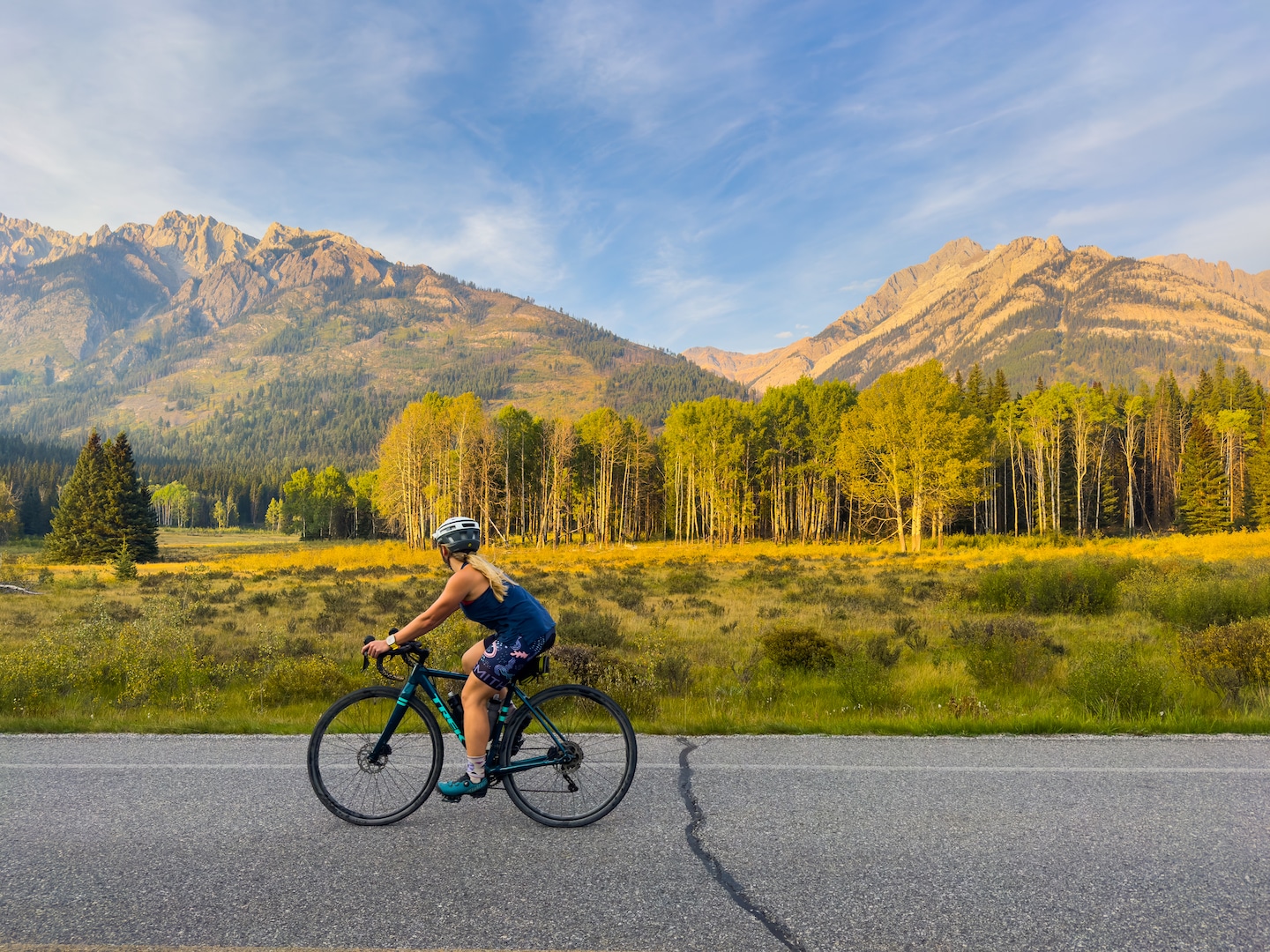
If buses, tours, and shuttles sound like a bit too much—or you just want to mix up your trip a little with some human-powered action—we can’t recommend biking around Banff more. You can easily rent a bike from Banff Adventures or Banff Cycle+Sport and hit the pavement.
You can easily get around Downtown Banff on a bike, traveling between Banff Avenue, the Cascade Gardens, Bow Falls, Vermilion Lakes, and the Banff Gondola.
Other great bike rides are the Lake Minnewanka Scenic Loop, which will bring you past Cascade Gardens, Two Jack Lake, and Lake Minnewanka (keep in mind there is quite a bit of uphill. Other options include the cycling the Bow Valley Parkway and the Legacy Trail to Canmore.
Where Is The Best Place to Stay in Banff Without a Car?
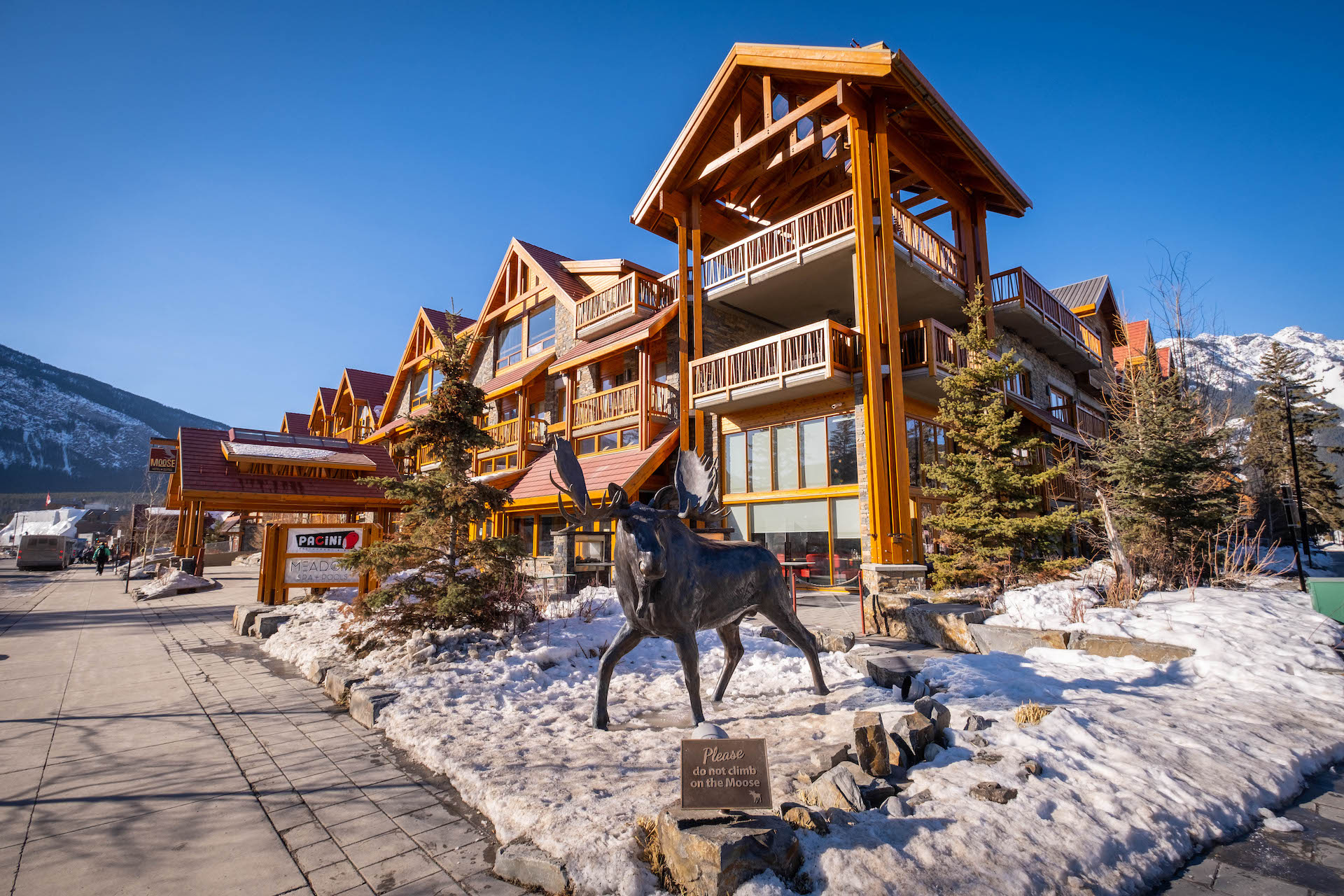
Downtown Banff is the best place to stay if you don’t have a car. This will give you easy access to all the best Banff restaurants, shops, and public transit.
Steer clear of accommodations on the Bow Valley Parkway, the Icefields Parkway, and even Lake Louise, as moving around these areas without a vehicle will be tougher. Here are a few of our hotel recommendations that are great if you don’t have a vehicle:
Plan Your Trip to the Canadian Rockies
- Recommended Experiences: There are many things to do in the Rockies, but our top recommendations include the Banff Gondola and a cruise on Maligne Lake to Spirit Island in Jasper. If you want a stress-free way to get to Moraine Lake, we highly recommend looking into Moraine Lake Bus Company.
- Hotels in the Rockies: There are many places to stay, from luxury hotels to wilderness cabins. See all our favorites here.
- Get to Banff or Canmore Without a Car: The Banff Airporter provides fantastic service connecting you from the Calgary International Airport (YYC) to Banff or Canmore.
- Get Around: We suggest renting a car to get around. You can search for rental cars on Rentalcars.com. For a campervan trip, you can check prices and compare on Outdoorsy.
- Cheaper Airfare: We also use Going for airfare deals and travel credit cards to earn points on purchases. Those credit card points can be redeemed for free flights and hotels! Our favorite cards is the Capital One Venture X (which has an insane welcome bonus right now) as it has no foreign transaction fees.
- Hop On, Hop Off: This tour is taking Banff by storm. It’s exactly what it sounds like, hop on and off a bus to visit all the best attractions at your own pace!

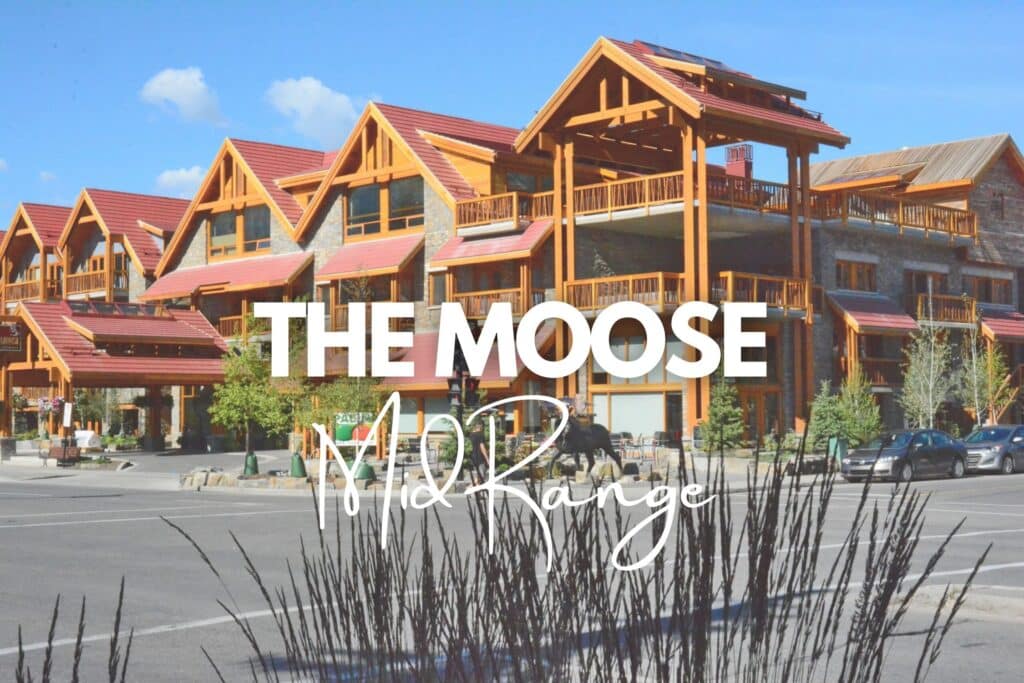
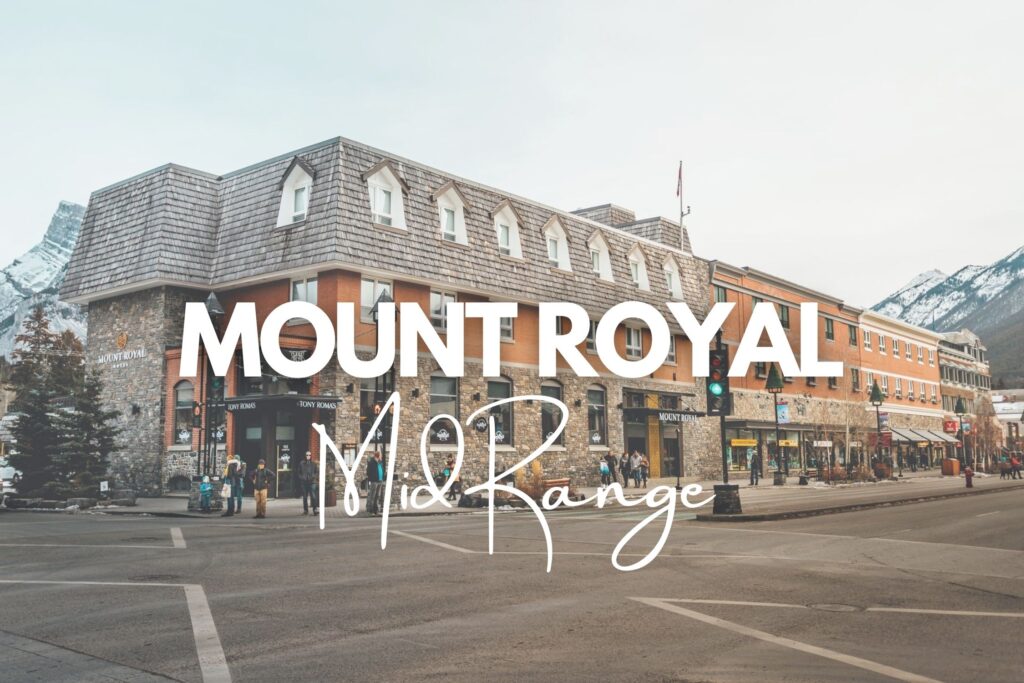
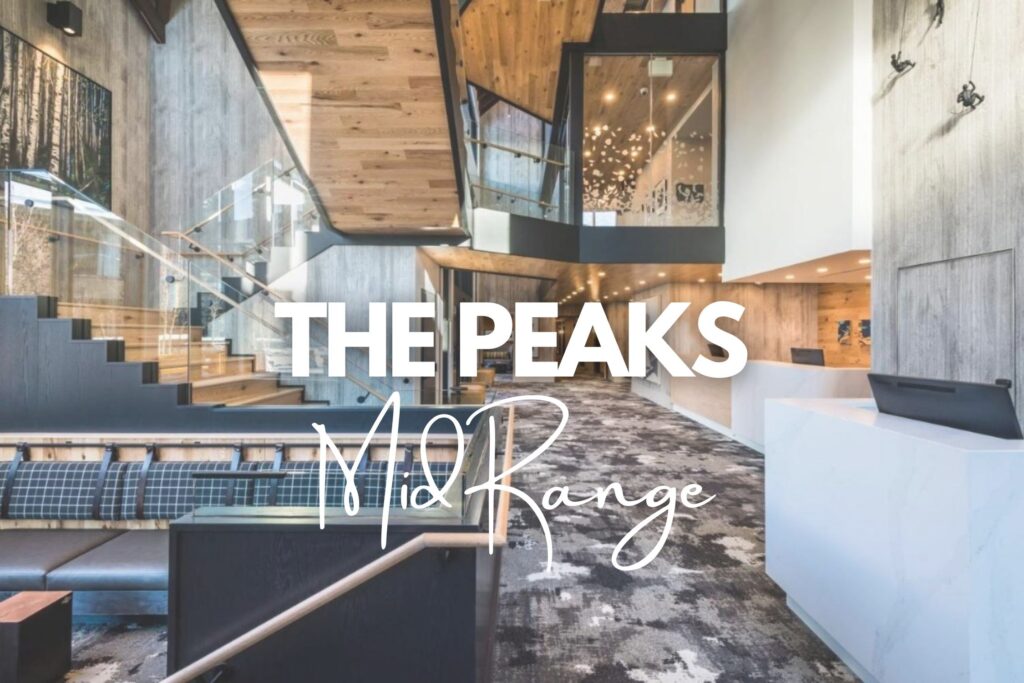
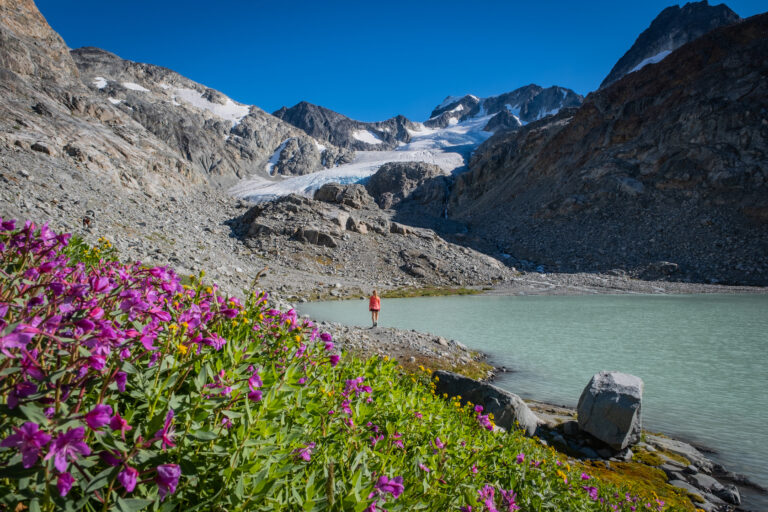
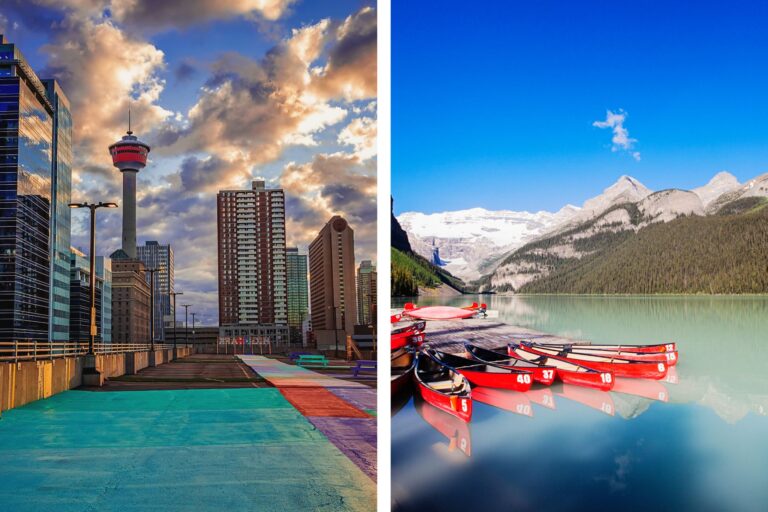
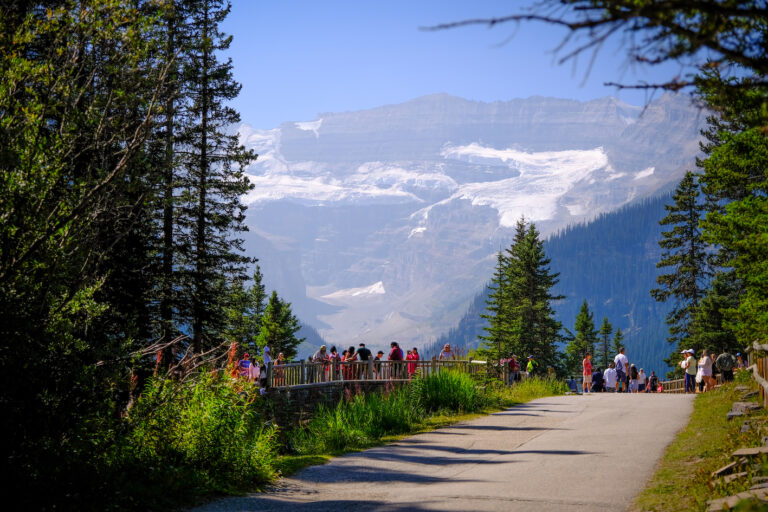
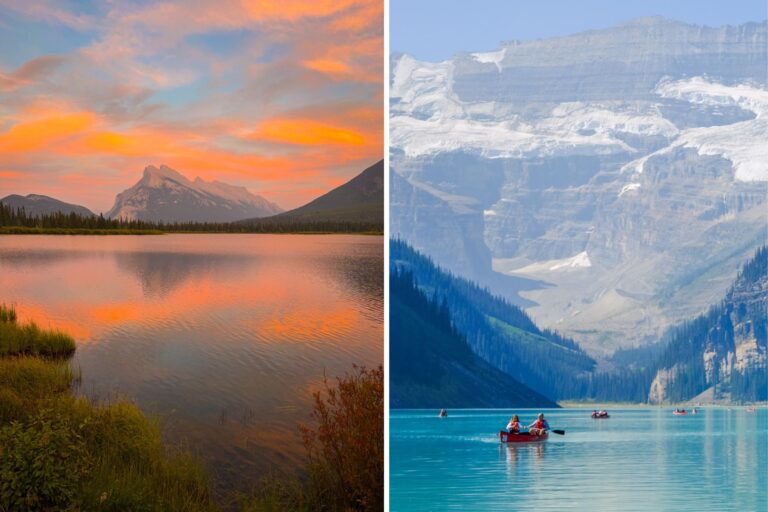
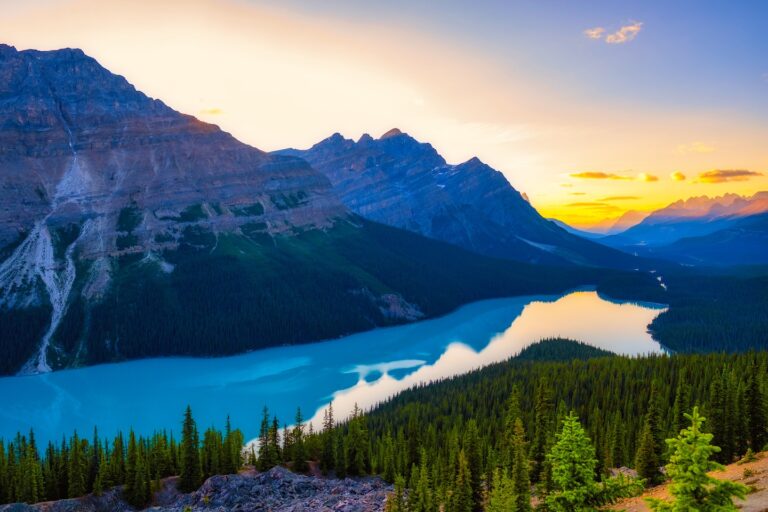
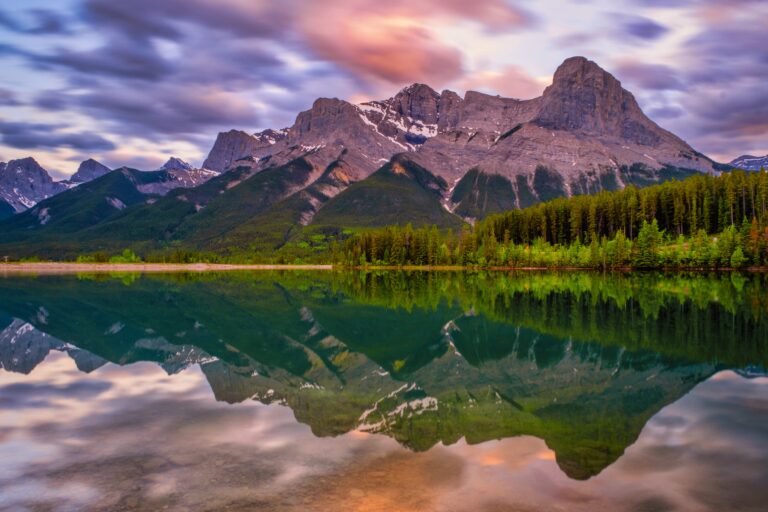
That’s really helpful thank you !
We will be driving from Missouri and our first time in the area. Shoukd we stay in banff or canmore? I know parking is a issue. What reasonable price nice hotel???
Hi Jan,
This article will probably help you decide: https://thebanffblog.com/banff-vs-canmore/ There are also multiple hotels recommended that vary in price point.